Focus on TRF418 Parts - Aluminium Parts
Let's start off our look at the new TRF418 with the aluminium parts. All major aluminium parts are new on the TRF418 and my impression is they have moved on to the next level compared to the 417-series. The quality and finish off TRF kits has always been great, definitely among the best in this industry, but what marks out the 418 is the level of detail on the aluminium parts. It's obvious that the aim has been to save weight where possible and this is beautifully illustrated on a couple of parts.
The motor mount and right center bulkhead/spur mount is all new, moving the motor in towards the center line a lot compared to the 417. At the same time the way the center shaft is mounted and how it works has been changed so that the cennter pullies now spin around a shaft mounted solid to the motor mount. Also, these parts are now separated from the upper deck. Notice how slim all the parts are.
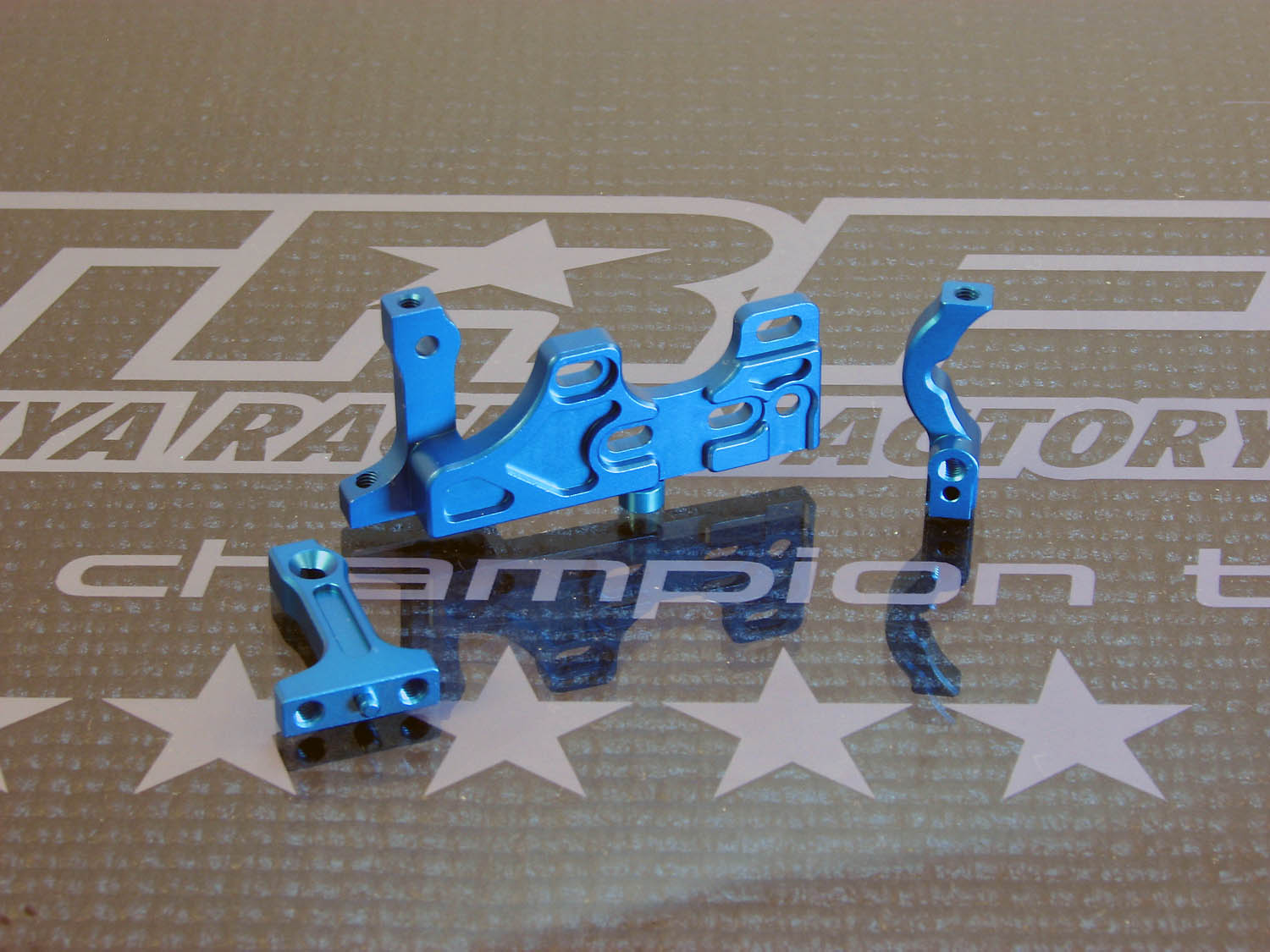
Front post attached to the motor mount. Again, notice how slim it is and how much material has been removed from the motor mount, which is a very light piece.
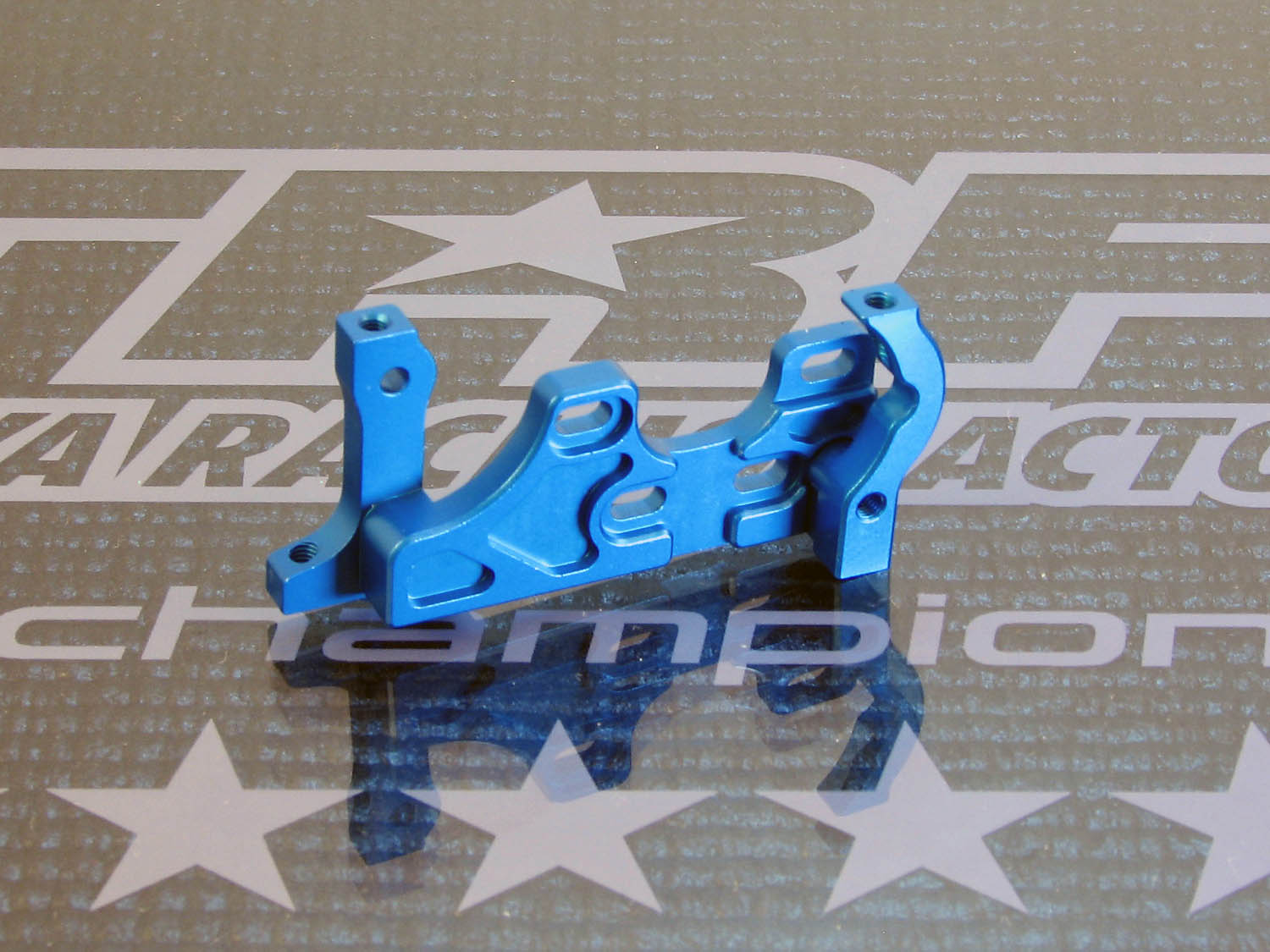
The servo mount mount has been renewed even though the mounting points and basic shape are the same. I really don't like the look of the ribbed upper surface on this part so I will stick to the older TRF417 V5 mount, even though the the 418 version is slimmer and lighter by 1-2 grams.
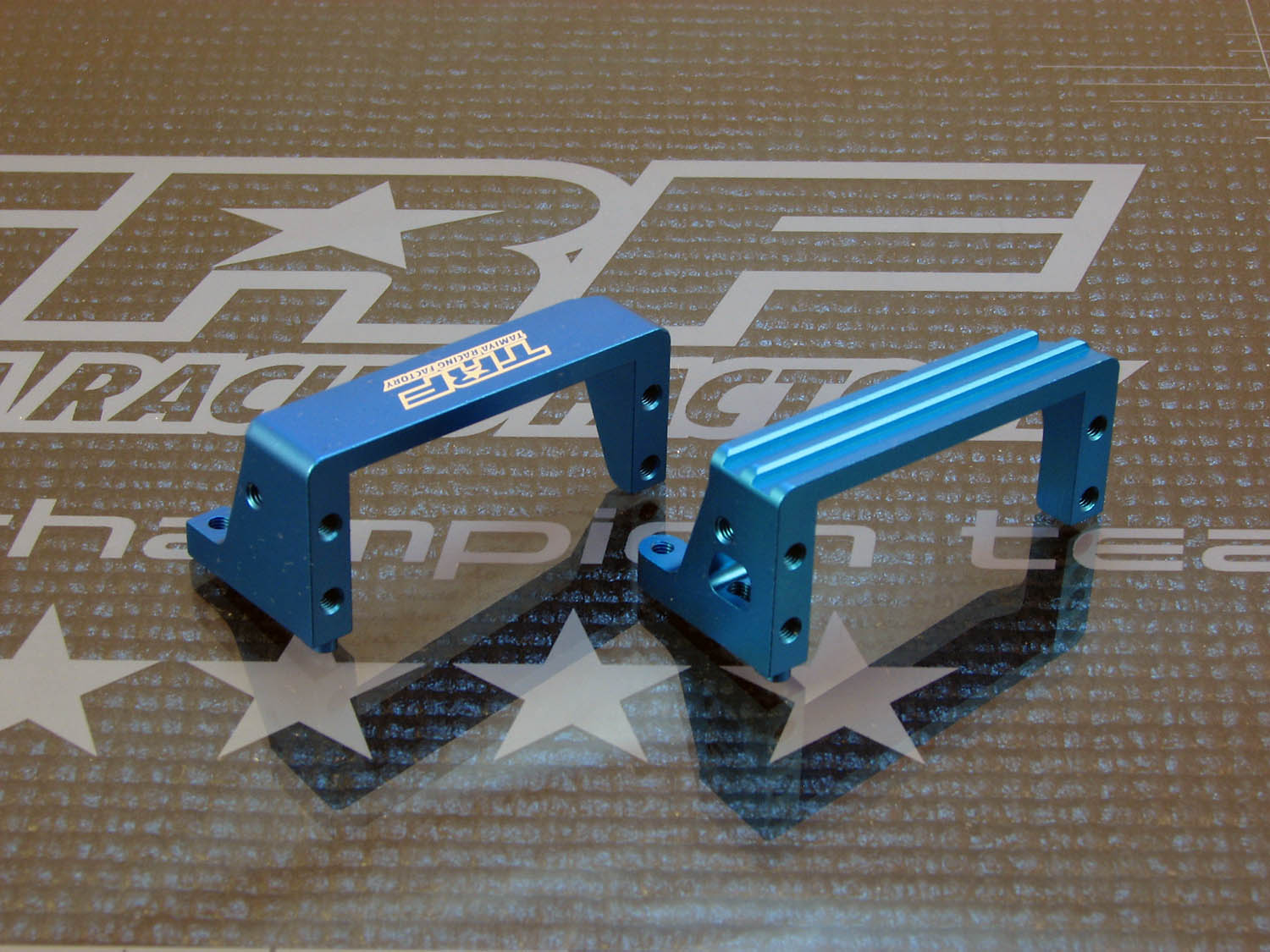
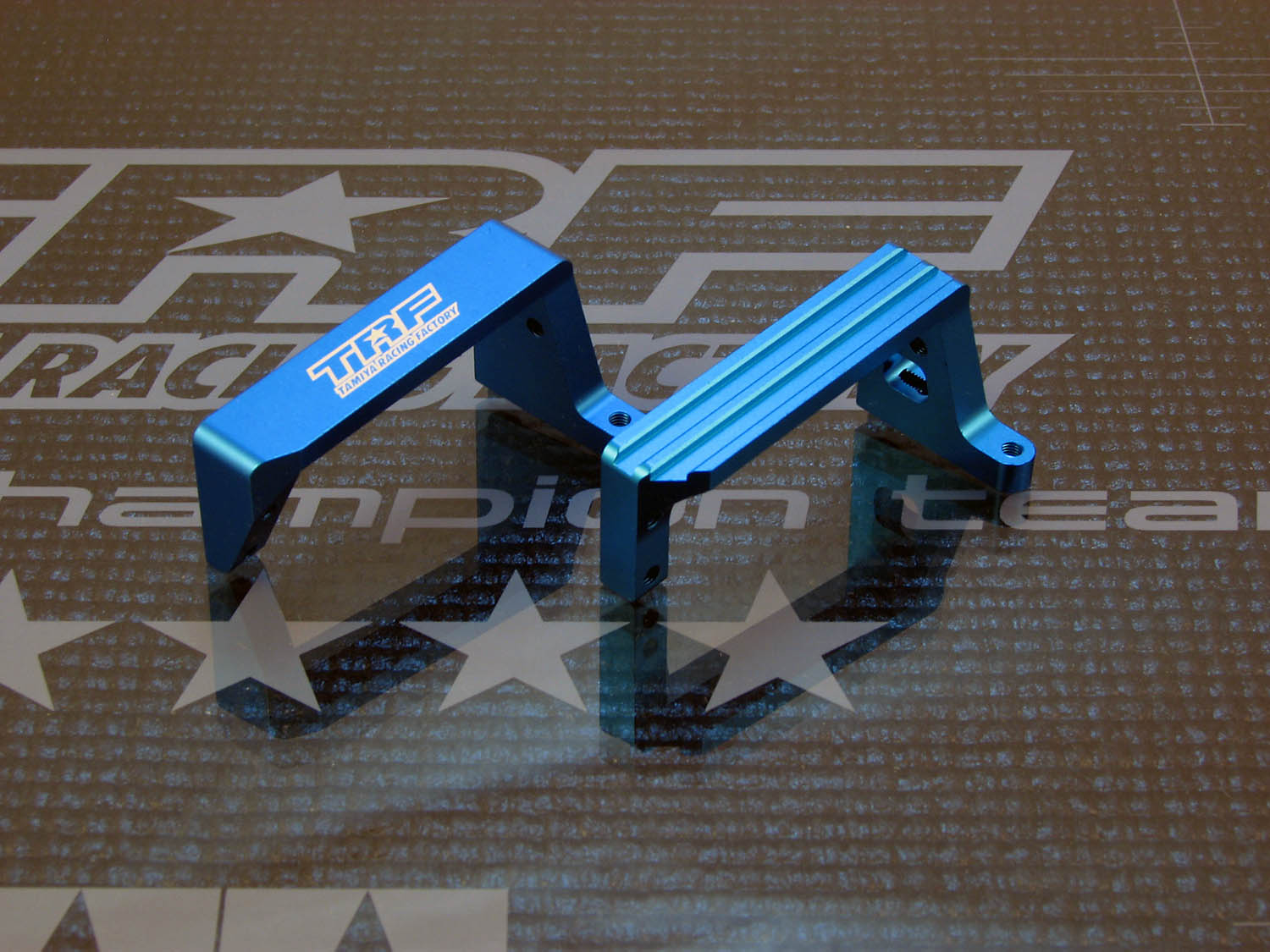
The lower bulkheads are also new although their form is similar to the 417 V5. They are marked A and B and are the same front and rear. Notice that they are pinned to the lower deck. In addition the upper bulkheads are now also pinned to the lower bulkheads - a very nice feature. Notice how the outer edges of the bulkheads are chamfered.
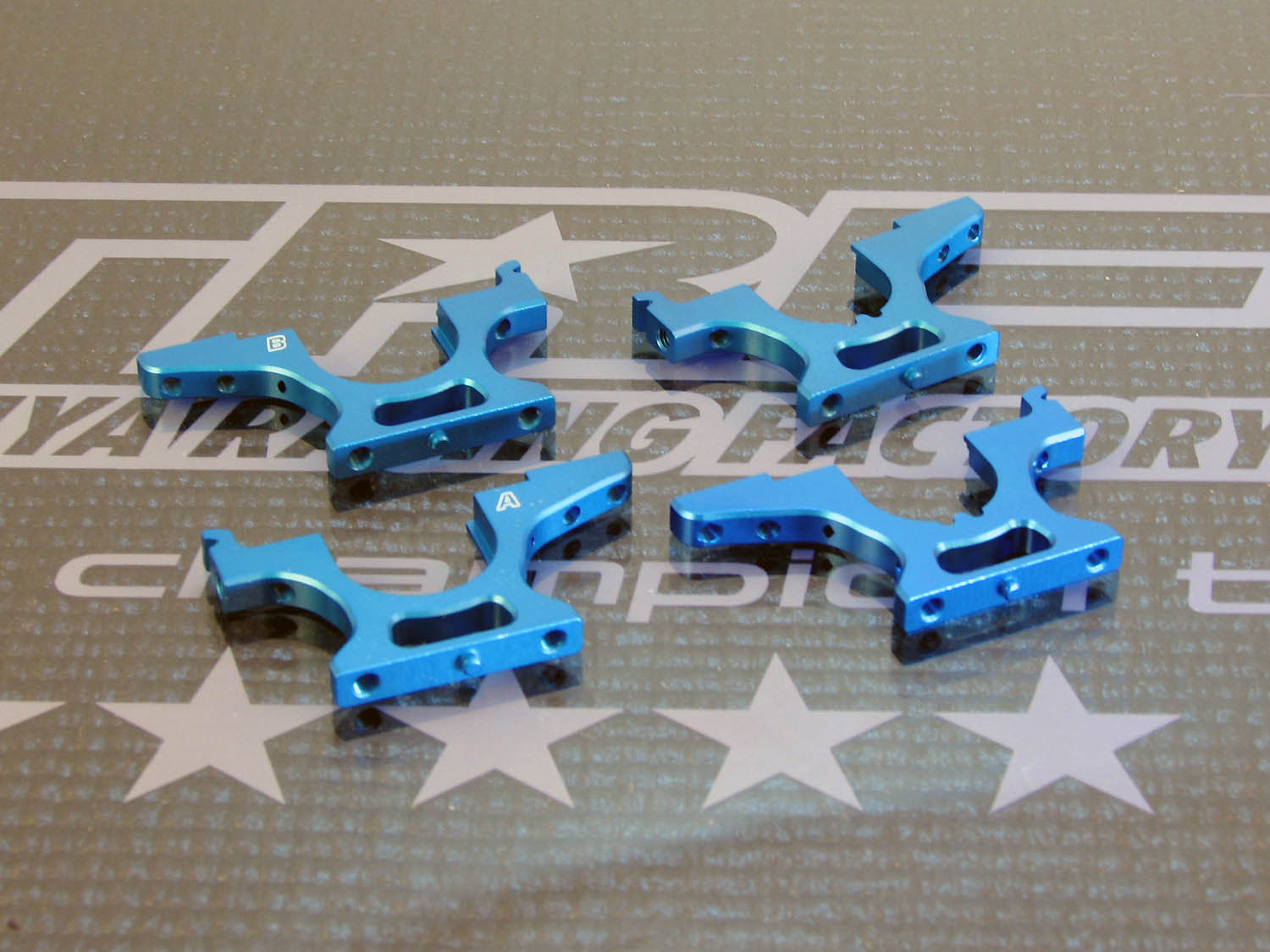
The upper bulkheads are also marked, but as FA/FB and RA/RB as they are all different. They now only have two mounting positions for the upper link, and this part is also higher meaning you need to use less spacers under the links which minimizes the risk of a bent ball connector. As already mentioned the upper bulkheads are pinned to the lower bulkheads to help avoid tweak abd misaligned bulkheads.
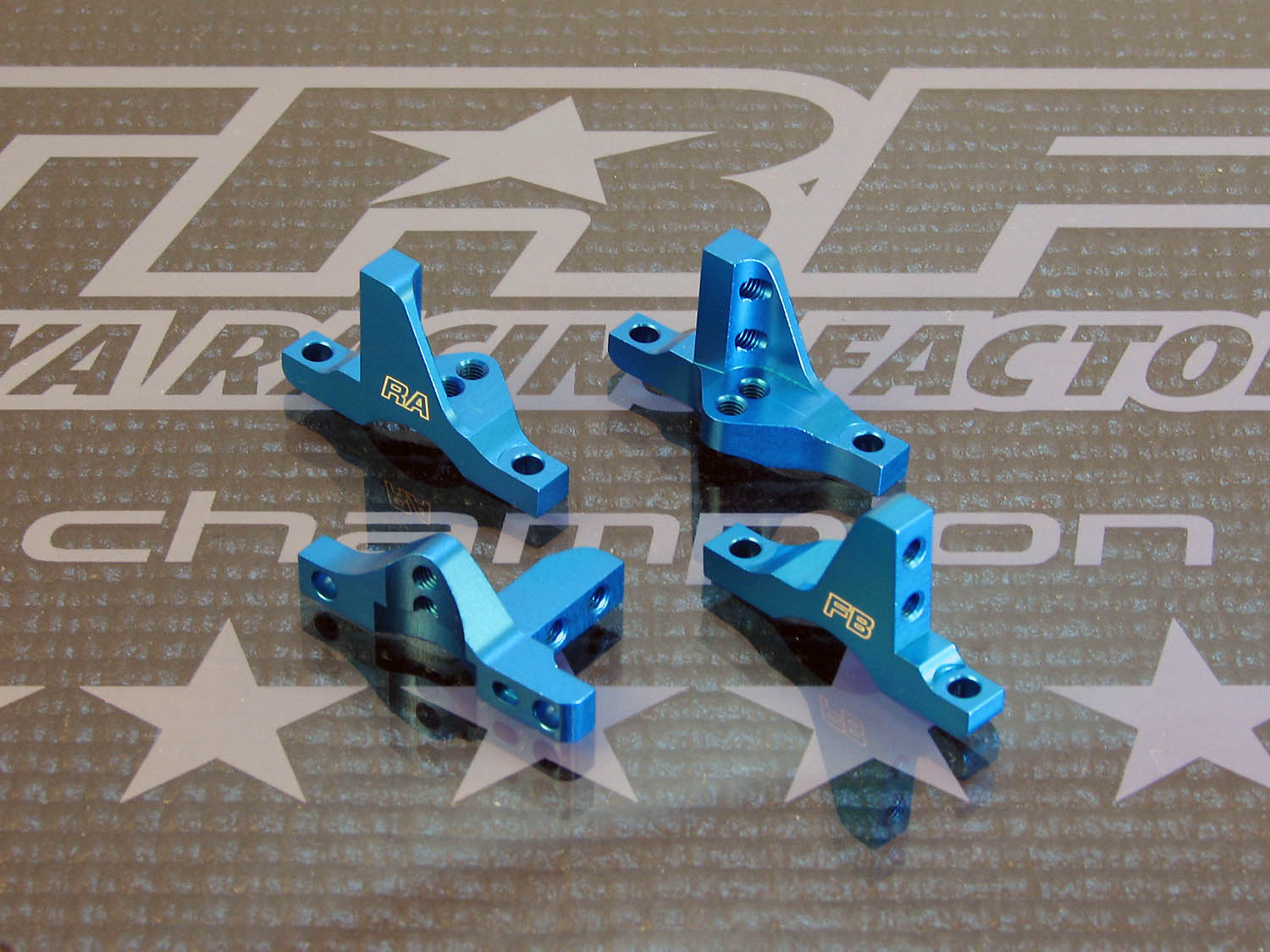
Possible the most beautiful part on the whole car is the new lightened spool housing. The new outdrives or spool joints are also much lighter.
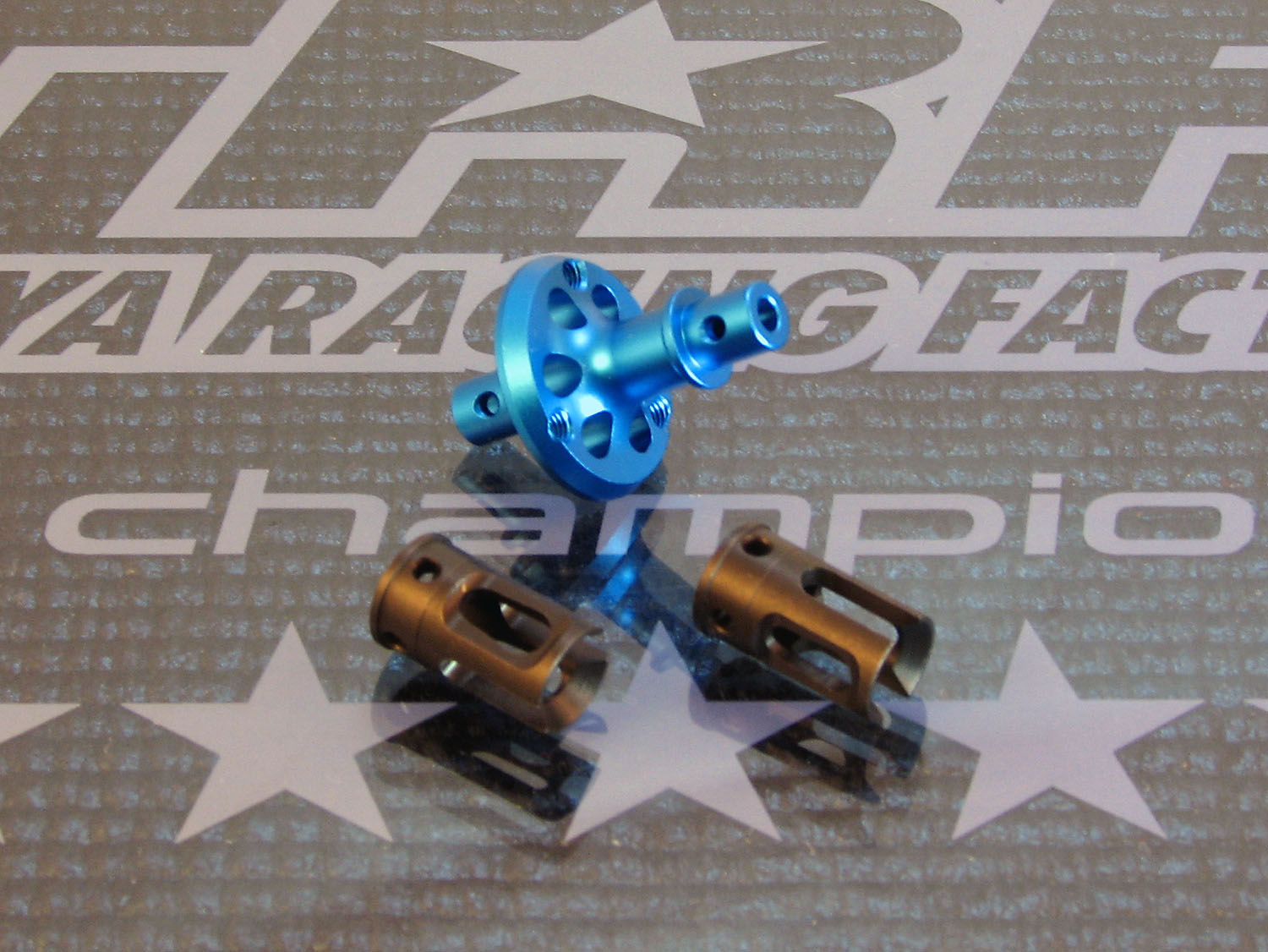
The center pullies are new with 20 teeth for an internal ratio of 1.85. As already mentioned the car has a solid center shaft mening that the pullies need to house bearings, which means 4x8mm flanged bearings pressed into the pulley.
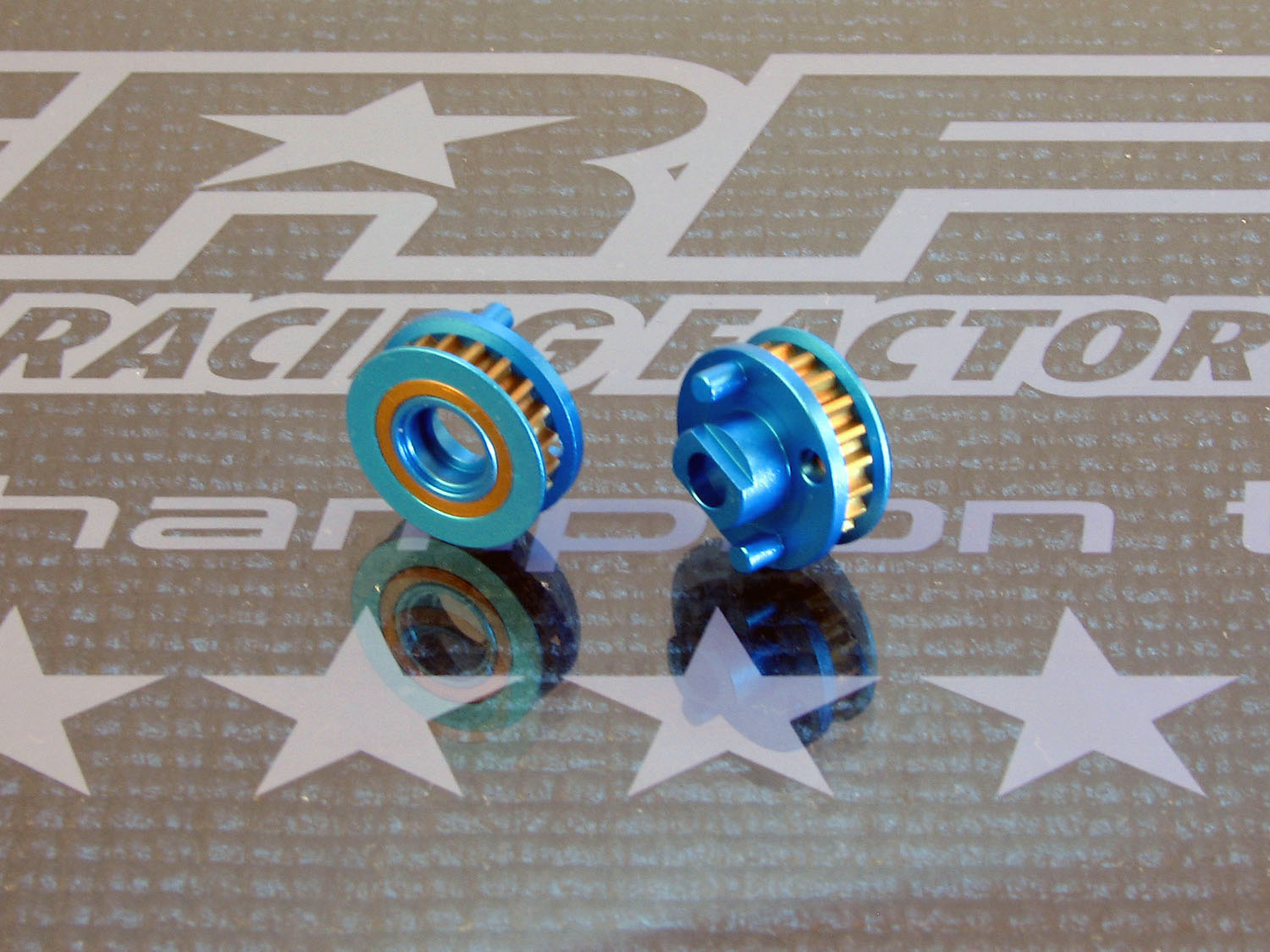
Again the steering arms get a new shape with as much material removed as possible. The steering bridge is also new and has a laser engraved TRF logo on the upper surface.
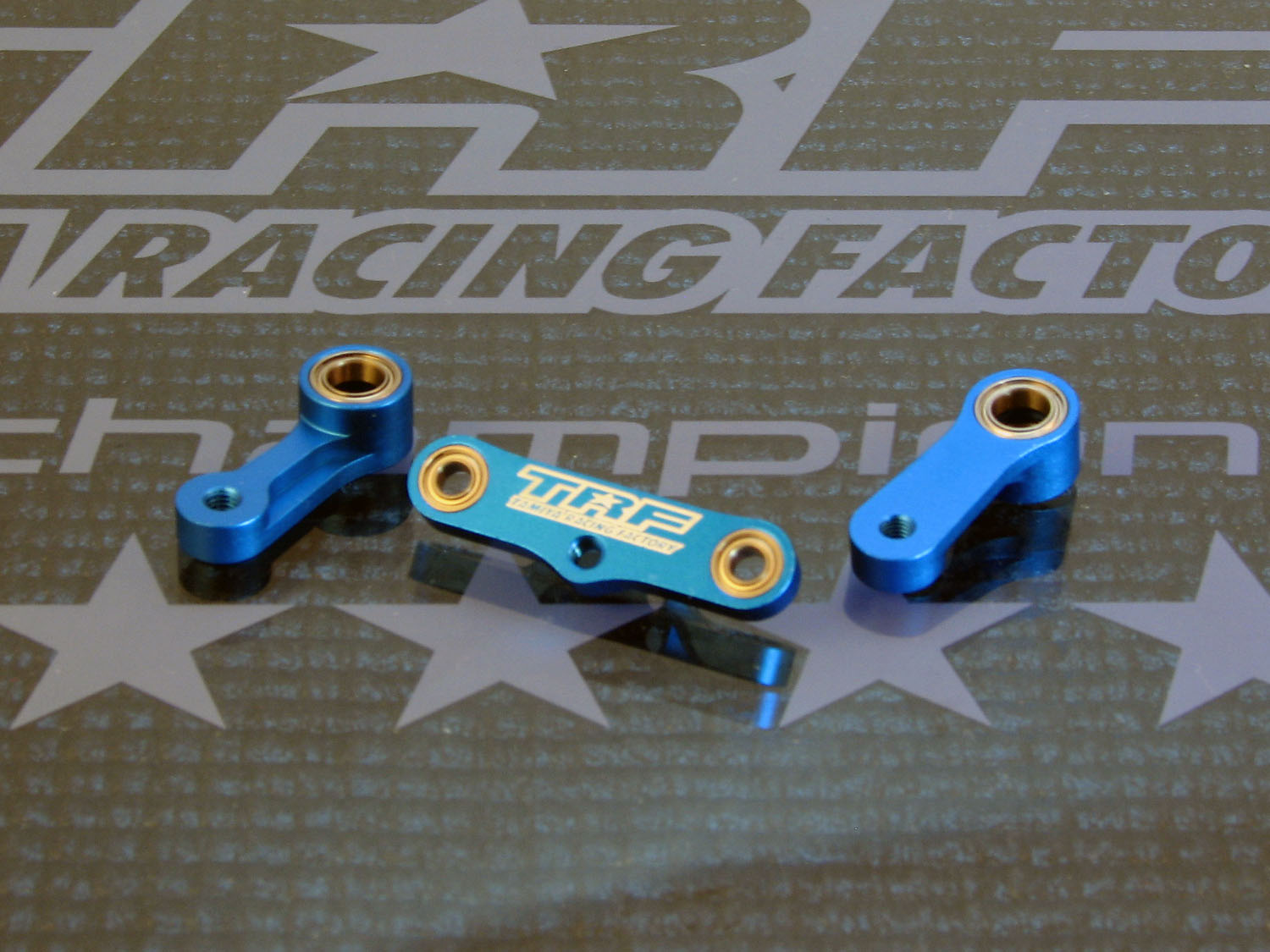
Even the supspension blocks have been revisited and the separate blocks gets material removed in two places, both front and back. 1C front blocks and 1XA rear. Here a new-style and old-style block for comparing.
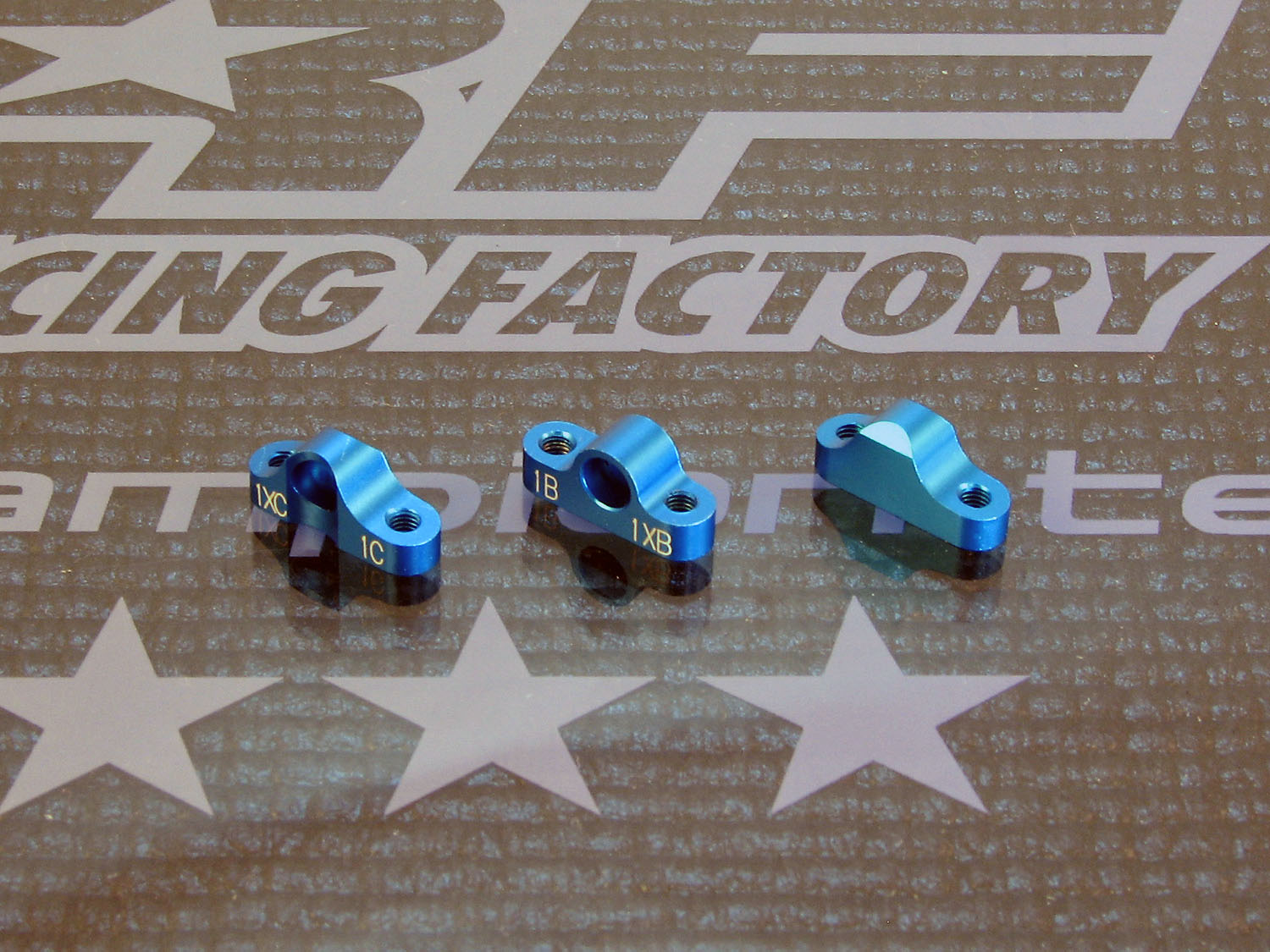
The one-piece blocks are slightly reinforced compared to the old-style to help prevent bent blocks. 1C front and 1E rear blocks. Here a new-style and old-style block for comparing.
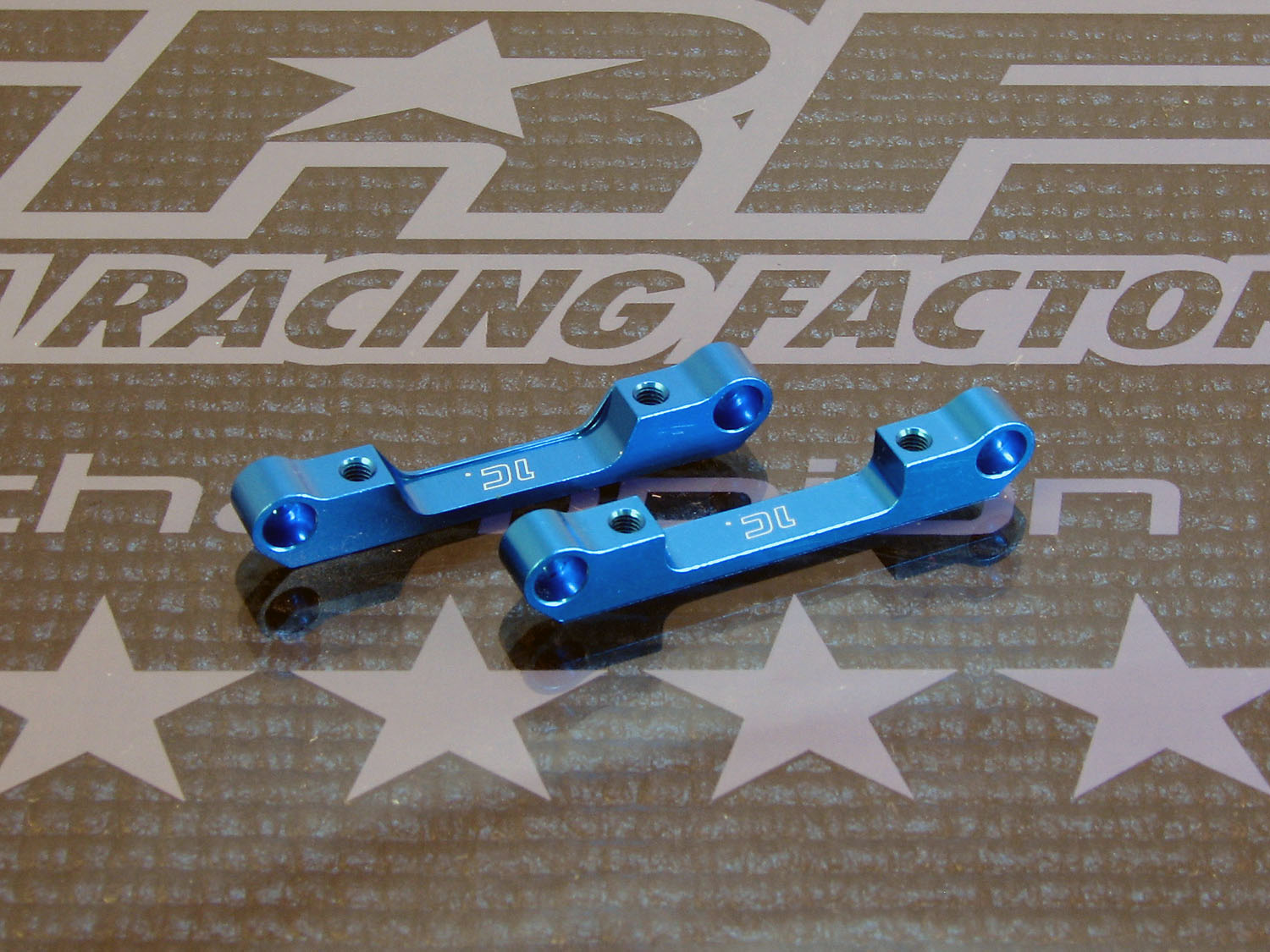
Focus on TRF418 Parts - New Suspension Parts
That the TRF418 got basically completely re-designed suspension parts was a suprise for me when the car was introduced. Personally, once it was clear it would have new parts I had hopes for a bigger step. However, the new parts look good and is an improvement compared to the old style.
The rear arms here compared to the 416/417 style arm. All the critical measurments are the same, with the pin-to-pin width on both 54mm (if my measurment skills are up to the job). The distans between the pin and damper mounting point is also the same at 39mm (this when compared to the #2 hole which was always used on the 416/417). However, on the new TRF418 arm there is only one mounting hole for the damper. Also new is that the droop screw is now an M4 screw, with the bigger surface against the lower deck helping reduce wear here in this critical place when it comes to downstop adjustment.
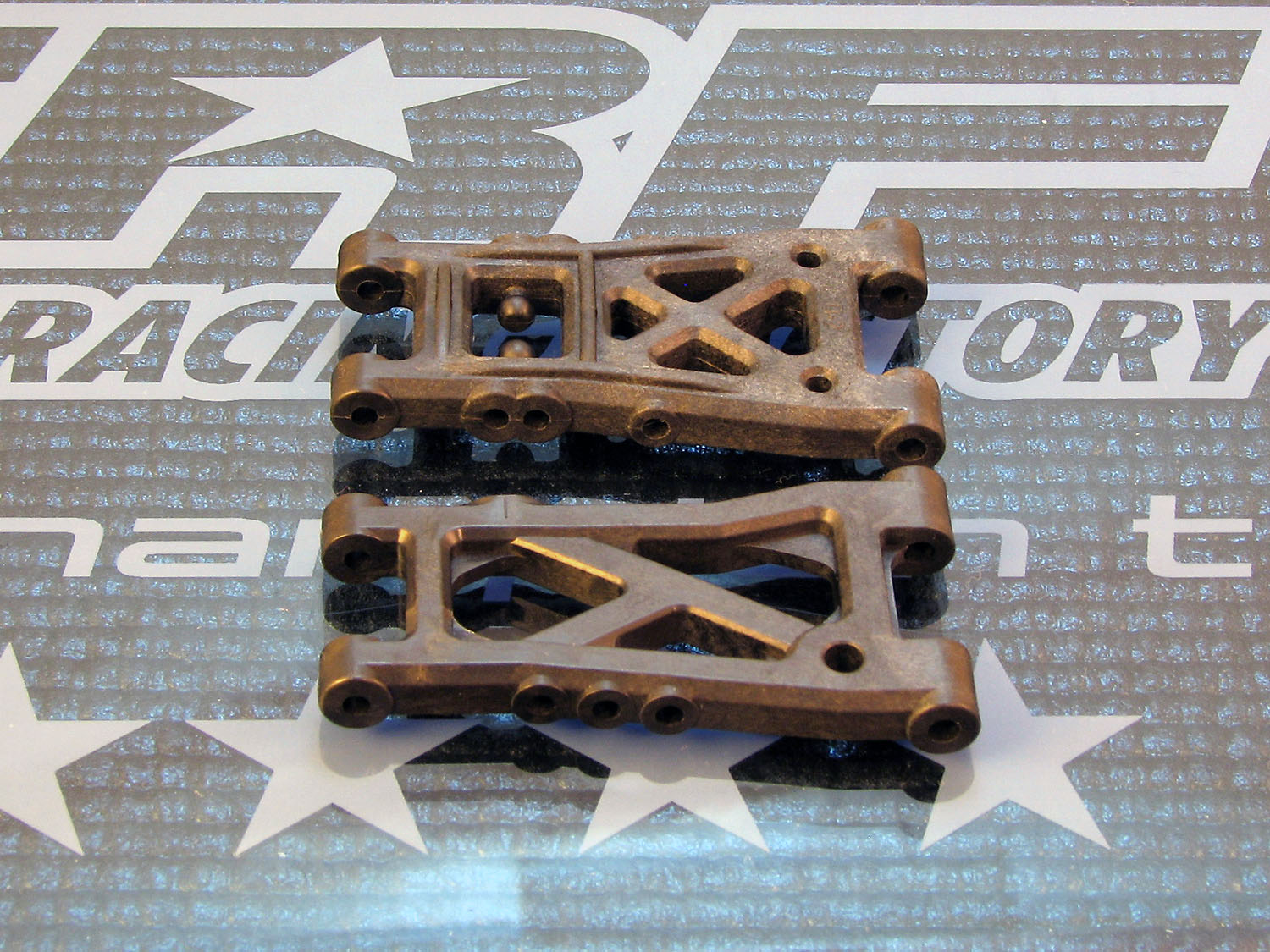
Again, the front arms see the same similarities and the same changes. The damper mounting position is the same as hole #1 which was always used on the old arms, which is at 33m and the arm length is also the same at 53mm. However, the shape of the arm as well as the roll-bar mounting is different.
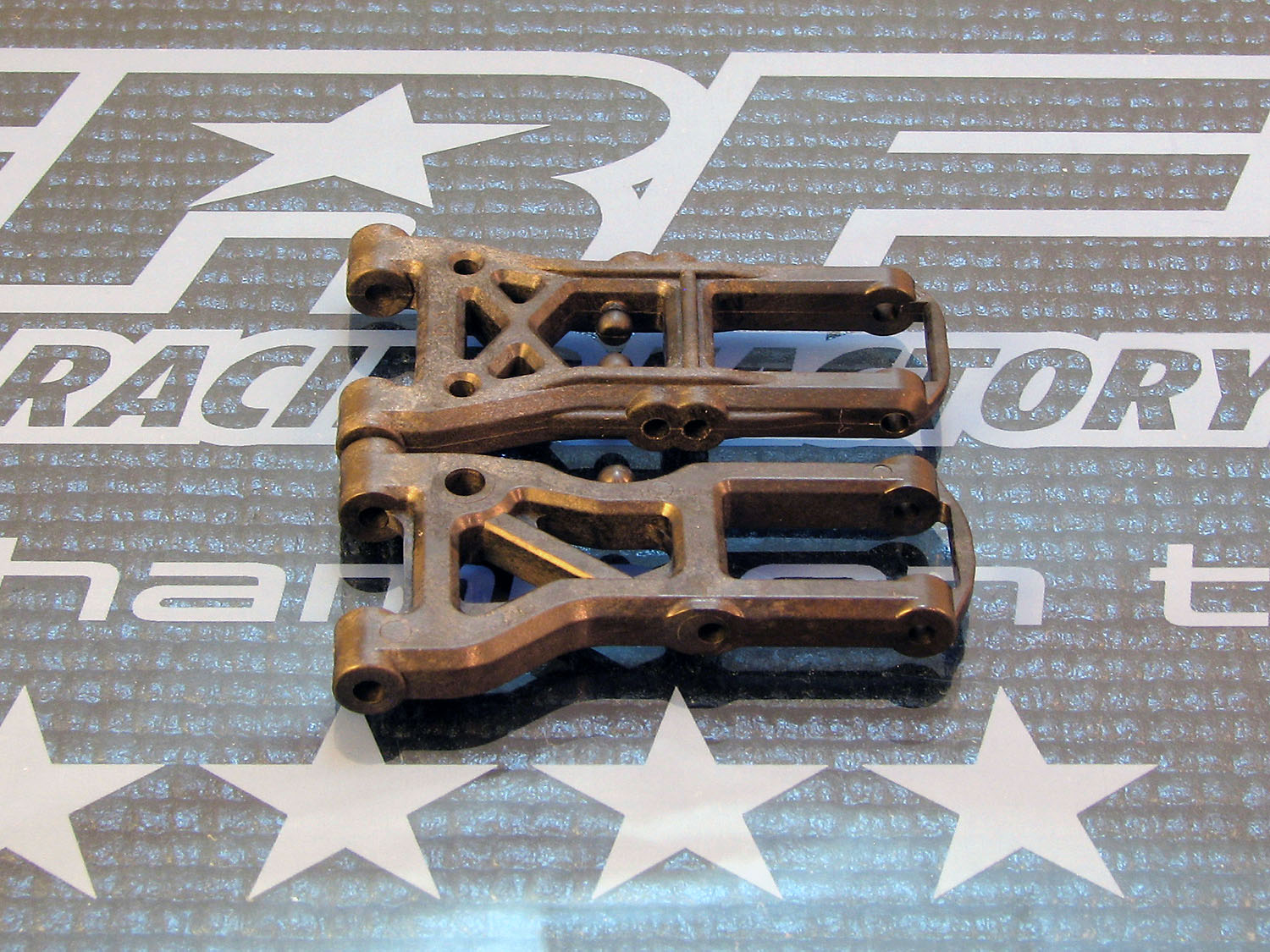
The front uprights are basically the same shape but the two holes for the steering link have been removed and replaced by a single hole placed a bit further in toward the chassis.
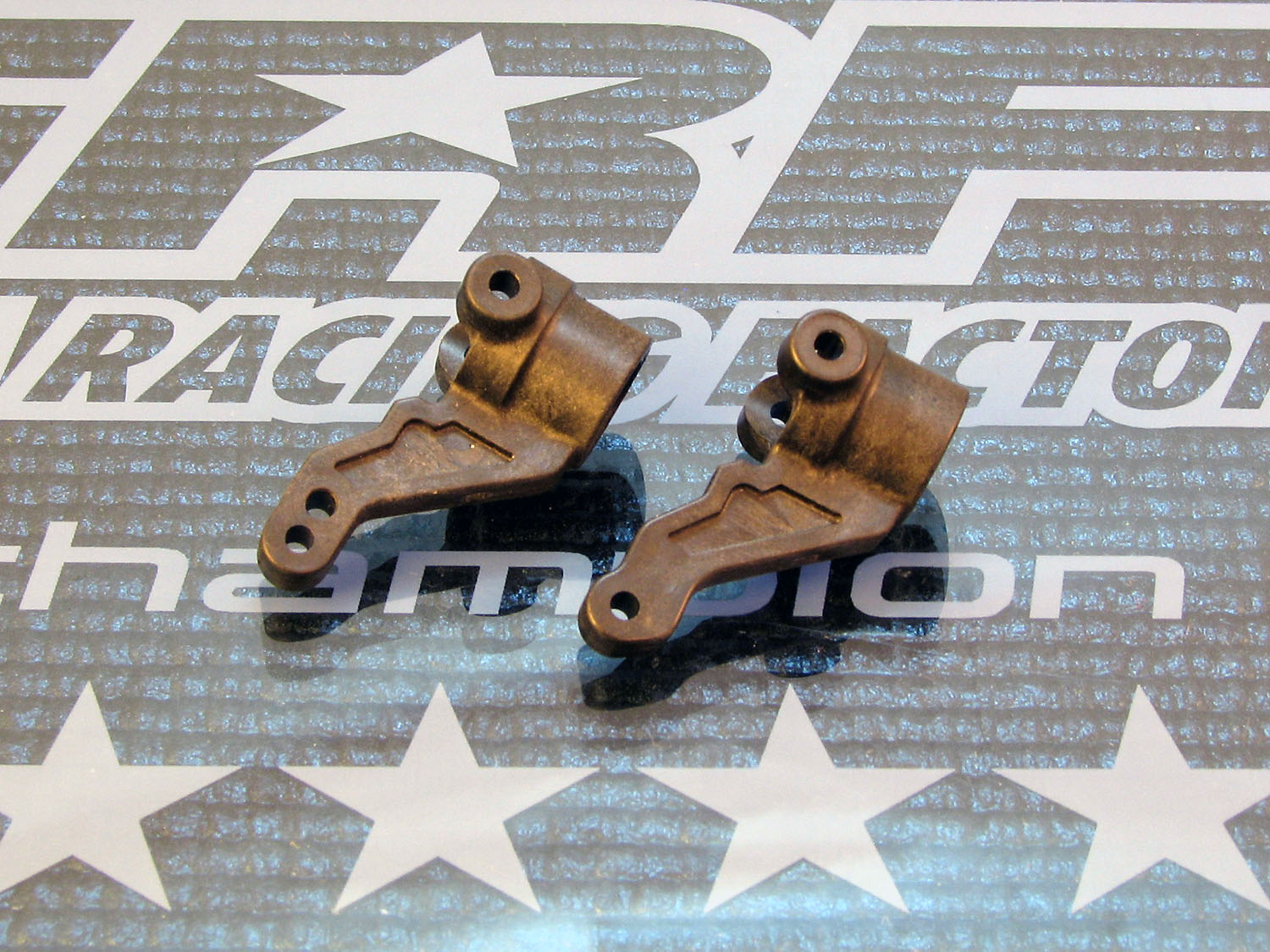
The rear uprights again have the same shape as the old ones, but with only one mounting hole for the upper links, placed between the two holes of the old part.
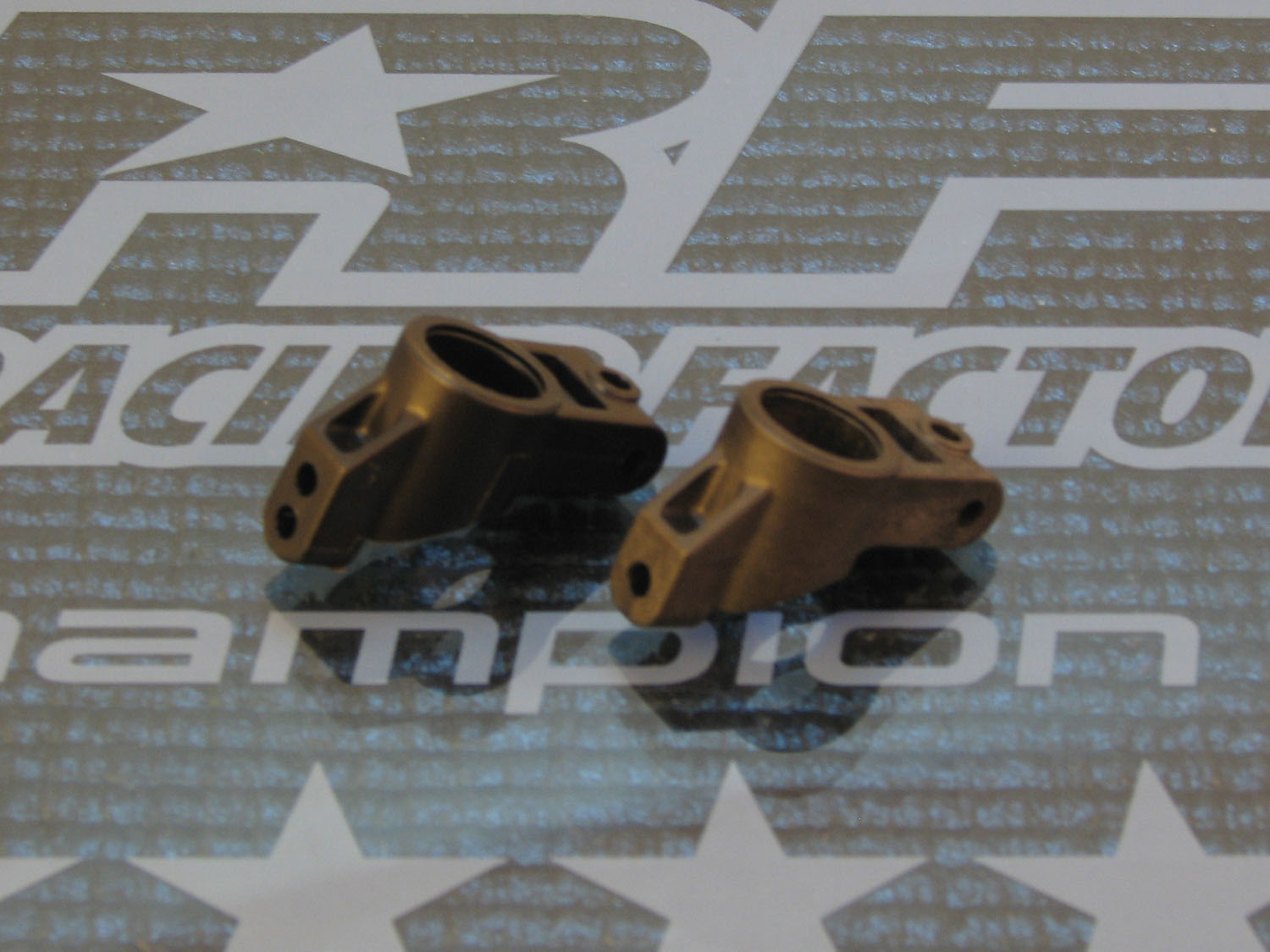
TRF418 Build
Here's my build report of the new Tamiya TRF418 - now completed.
BAG A
All parts in this and the following pictures are completely new for the TRF418.
The lower deck appears quite stiff, possible too stiff, but well have to see once the car is completely built.
Option parts used and seen here are aluminium and titanium screws.
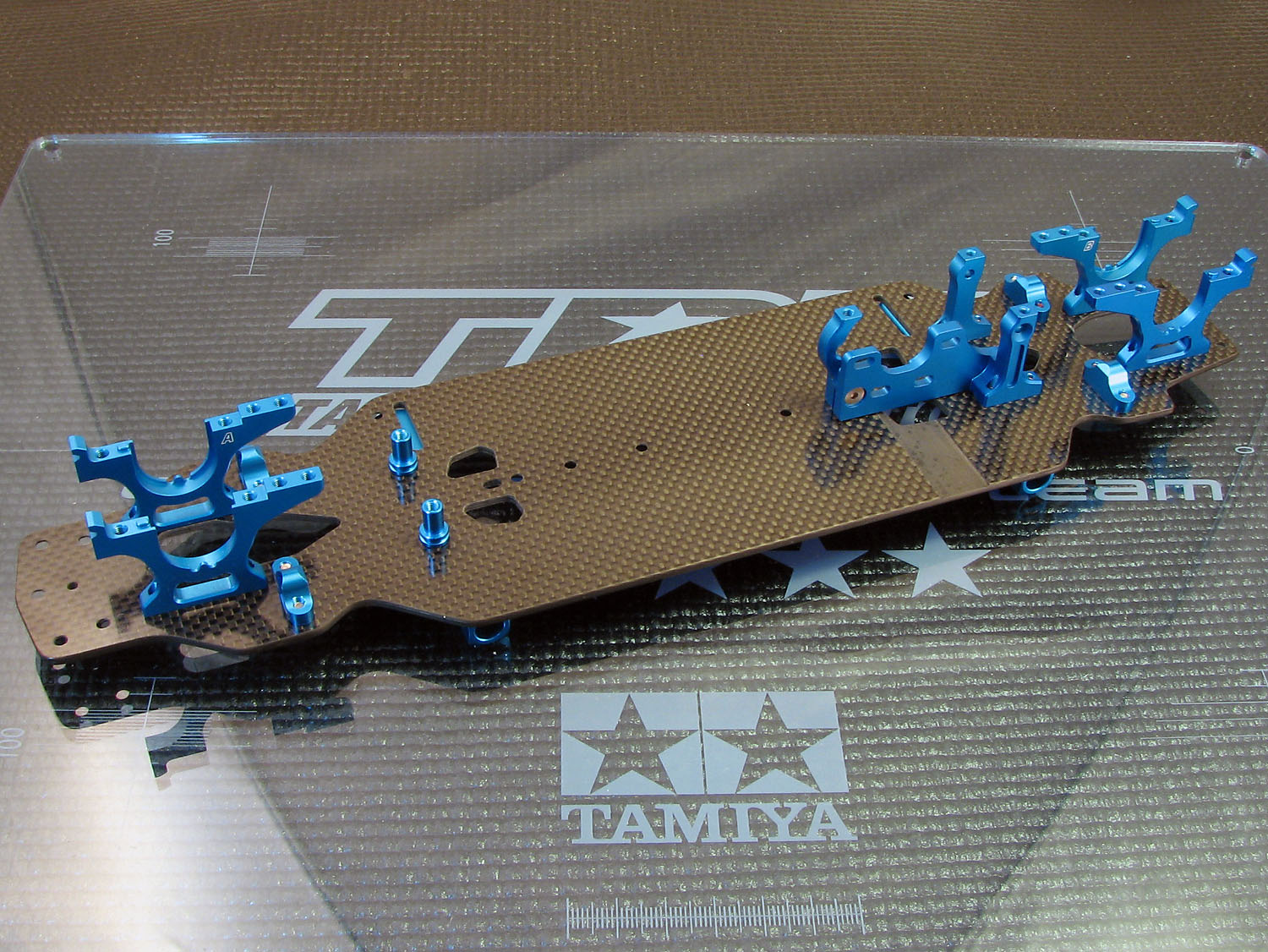
In this picture you can see how the motor has been moved forward and in towards the center of the chassis.
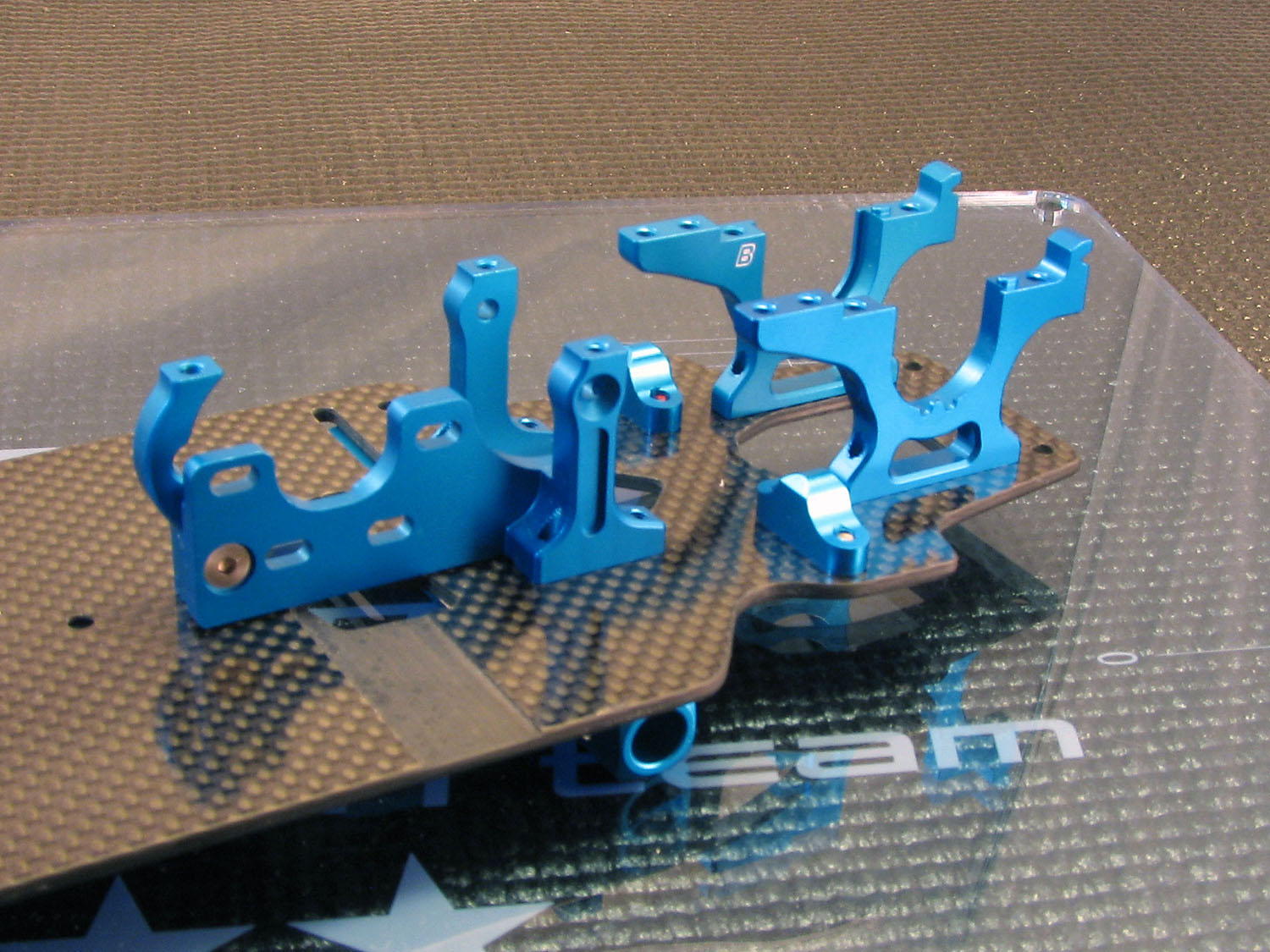
Here you can see the new separate suspension blocks with material removed to clear steering links at all settings. You can also see the new 54479 Separate Suspension Mount Setting Spacer (0.5mm/4pcs.) which is included with the kit. The standard setting is as you can see 0.5mm under the blocks. 1C blocks are included.
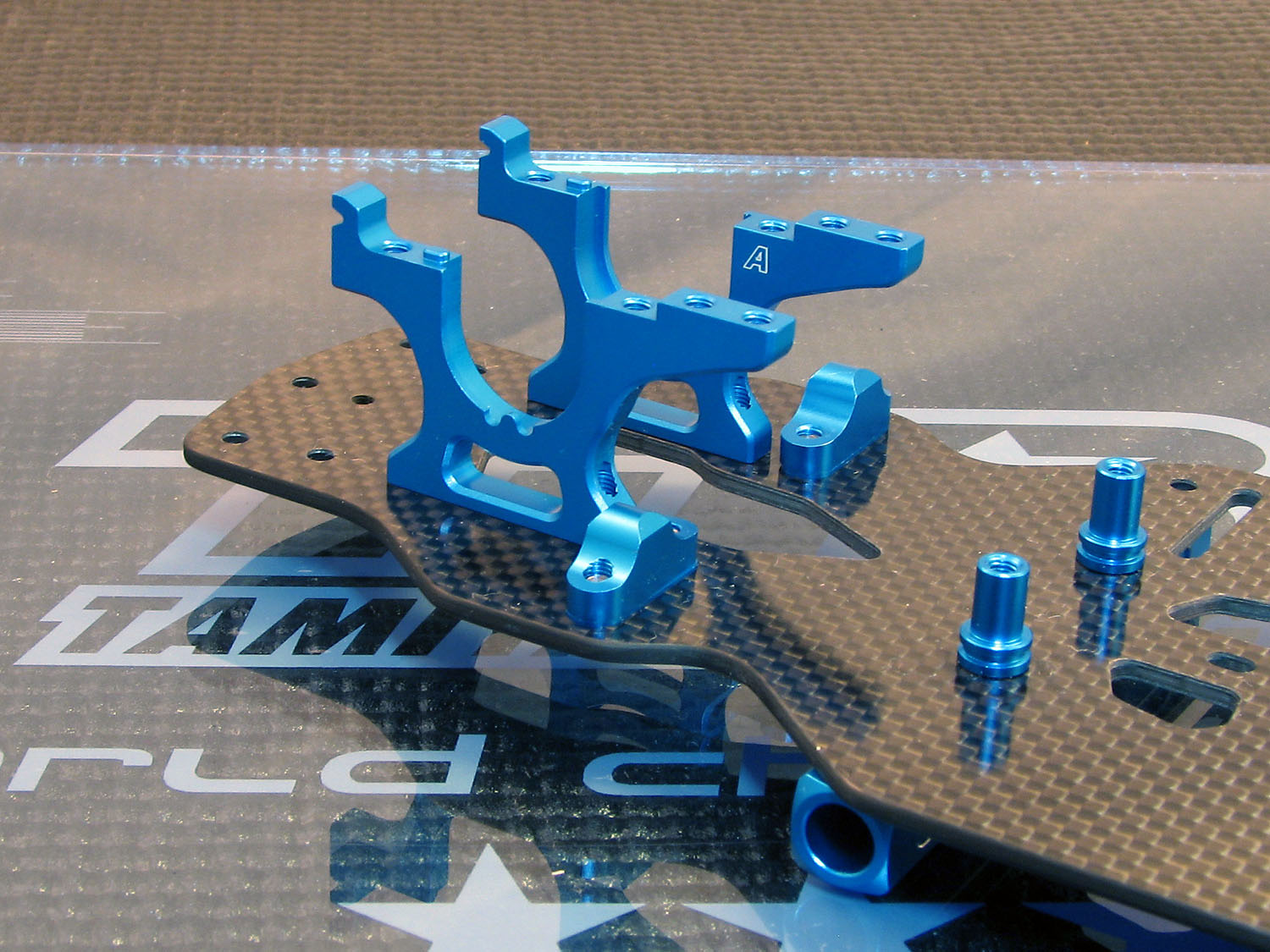
Good picture of the slim and heavily lightened motor mount. Notice how all parts have the edges chamfered for a very nice look. The anodizing is also perfect as usual on TRF kits.
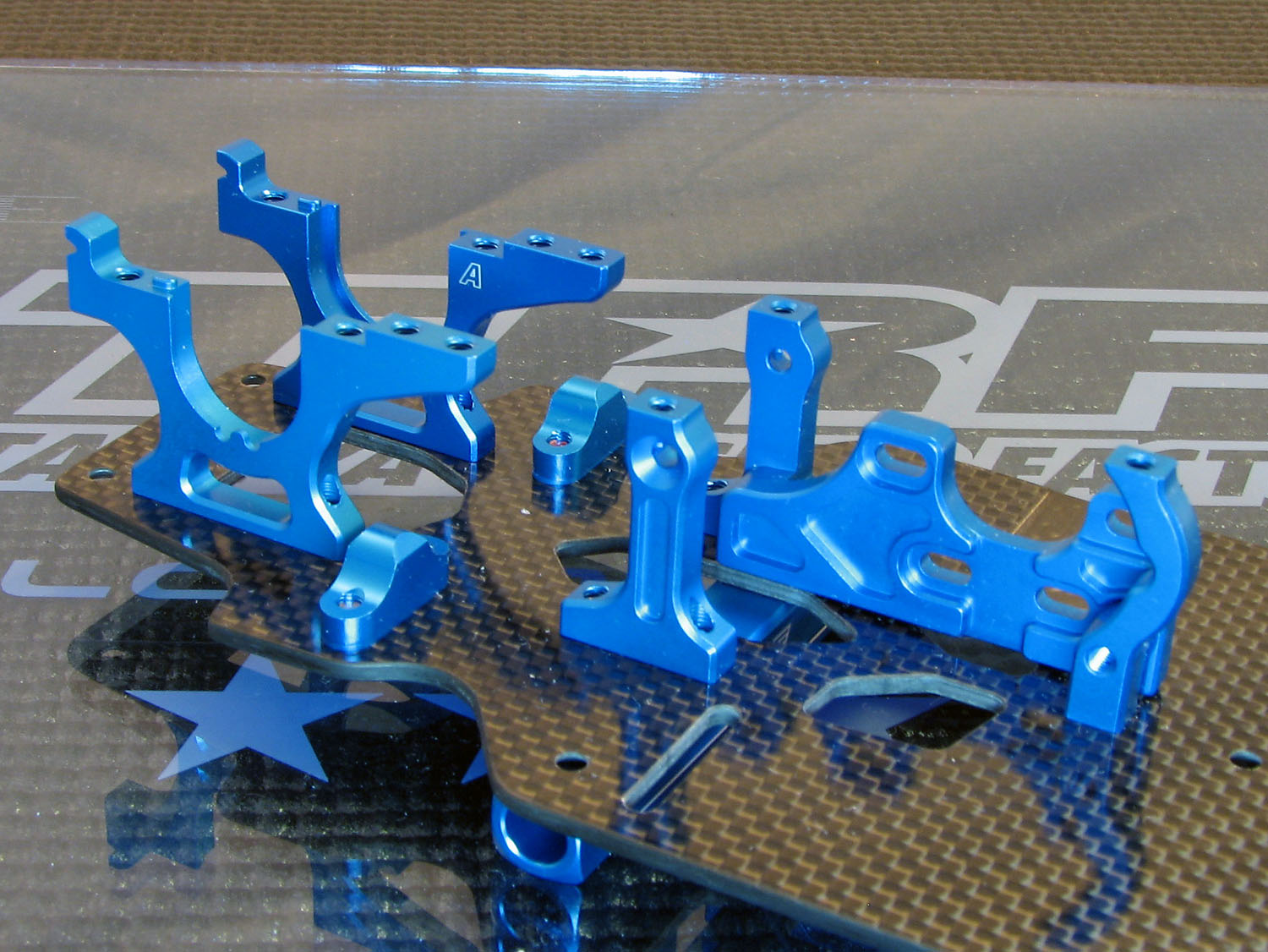
In the pictures below you can see the drivetrain installed. I use a Panaracer spur gear in place of the supplied 116T Tamiya spur. The gear diff is the same as on the TRF417 V5 and works well, however I suggest you use there o-rings in place of the included black ones: 42259 5mm Gear Differential O-Rings (Red/8pcs.). Tamiya 900 oil is as usual supplied. I used Kyosho 1300 oil and TRF gear diff grease on the o-rings and gasket.
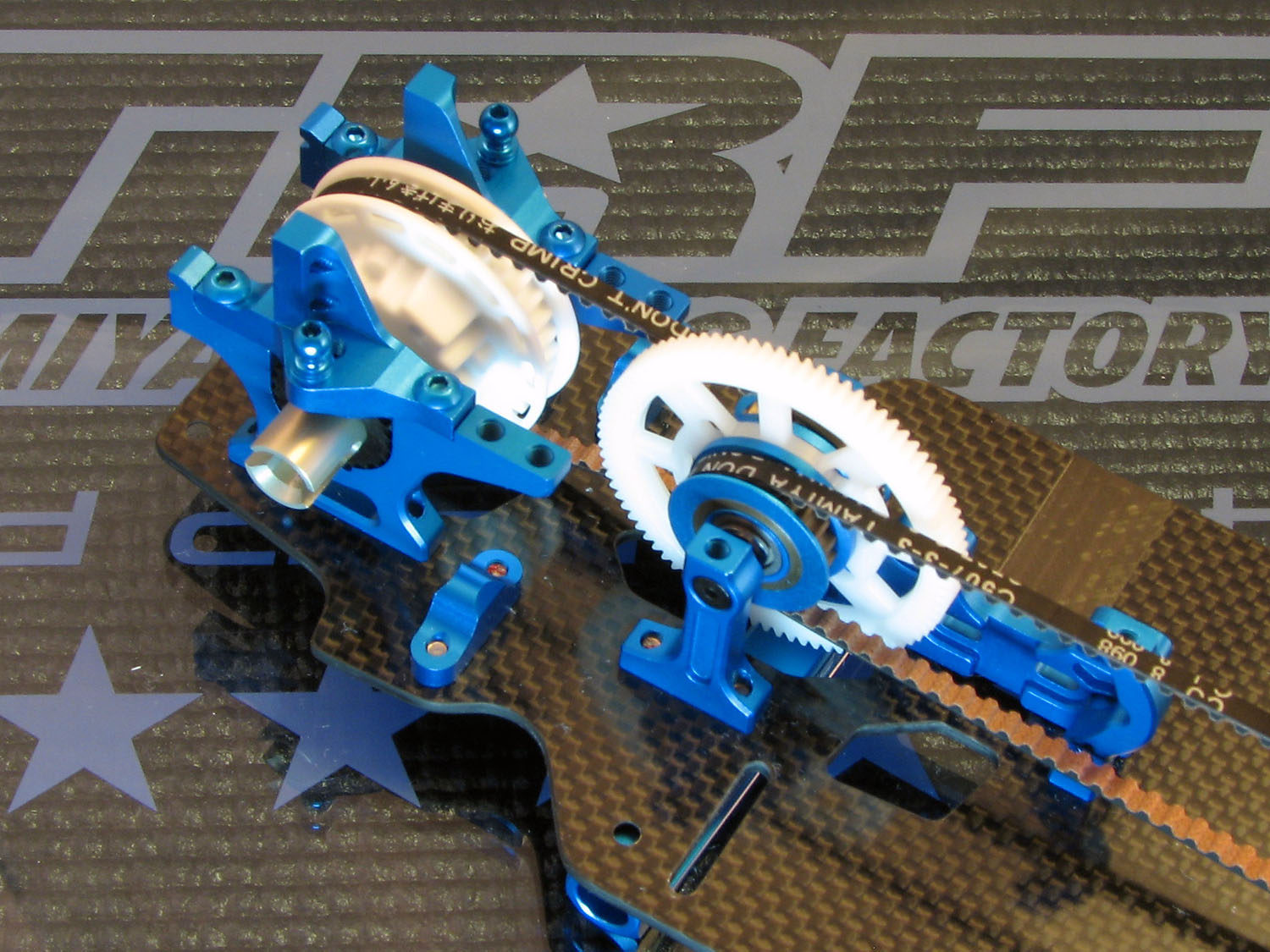
Both front and rear belts are new with the front belt 169T (507mm) and the rear belt 63T (189mm). The center shaft / pulley system is also new and it all fits together really well, without any excess play. M2.6 screws are used to hold the center shaft. The suspension blocks included are 1XA and again the same separate spacers as at the front.
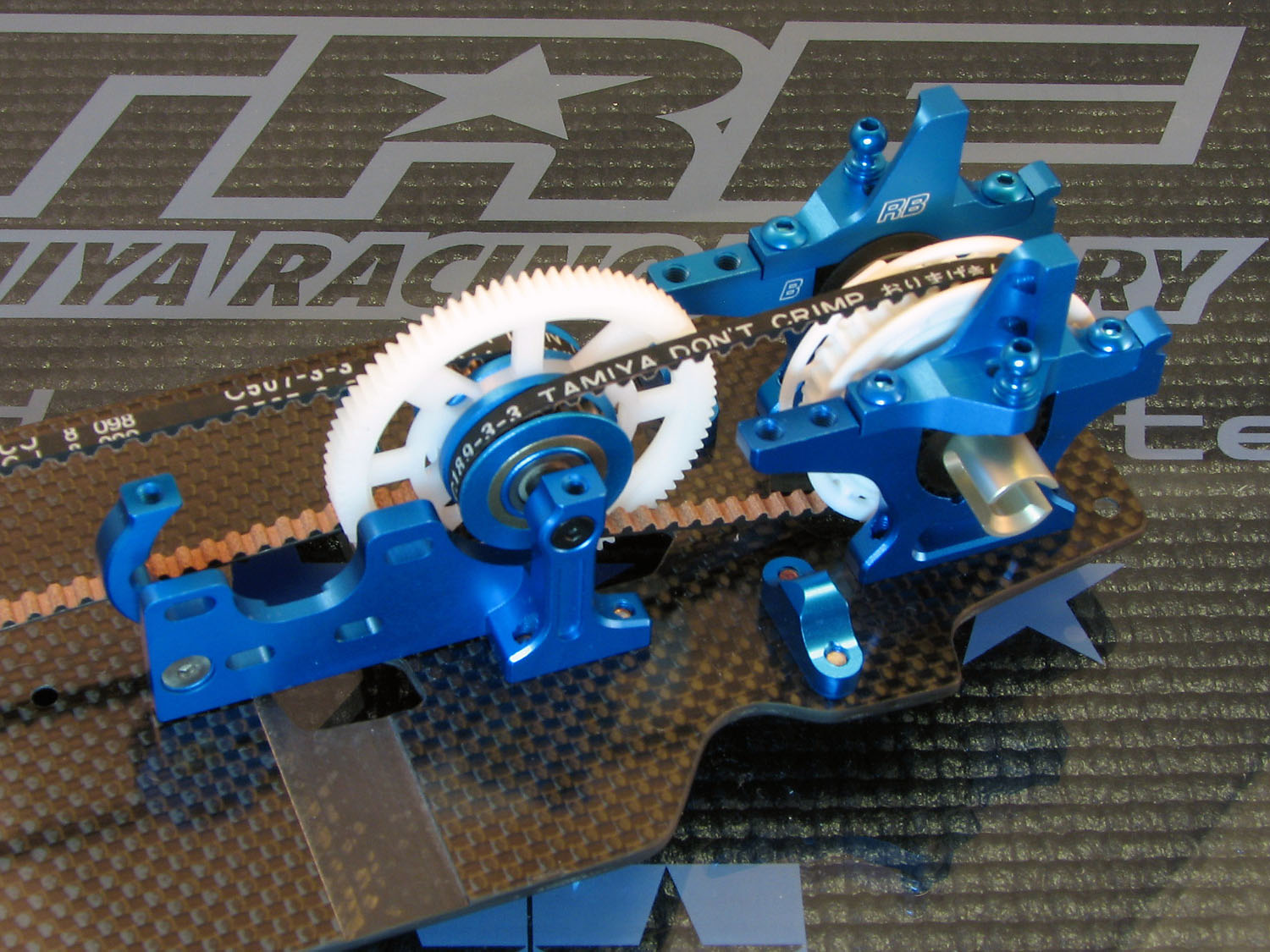
In this picture you can see the lightened spool joints. Also new are the "H5" ball connectors for the upper link which you can see here. These are 1mm higher compared to the old version.
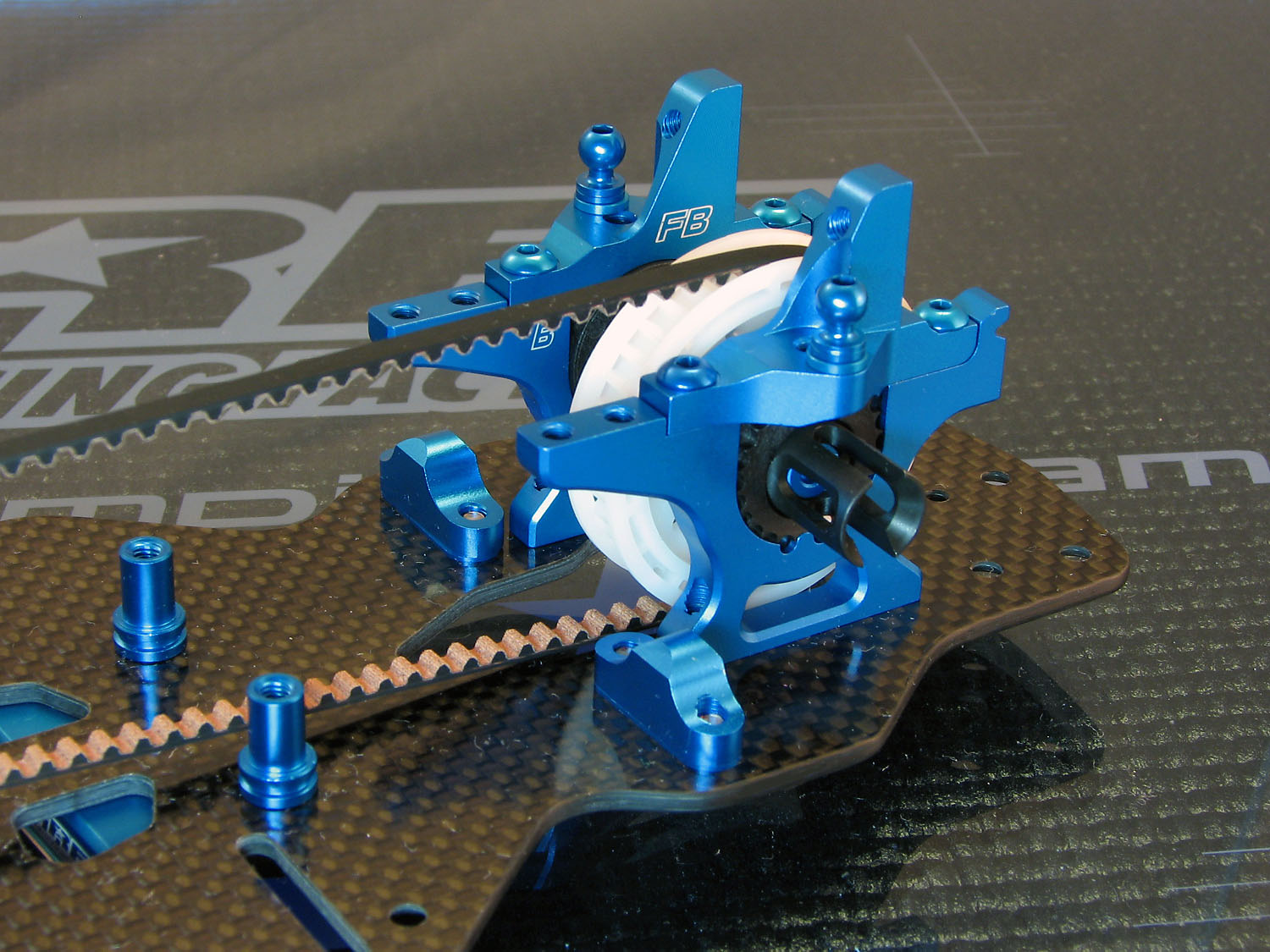
BAG B
Here you can see the new steering installed - all parts new for the TRF418; posts, arms and steering bridge. The new H5 ball connectors are used here too.
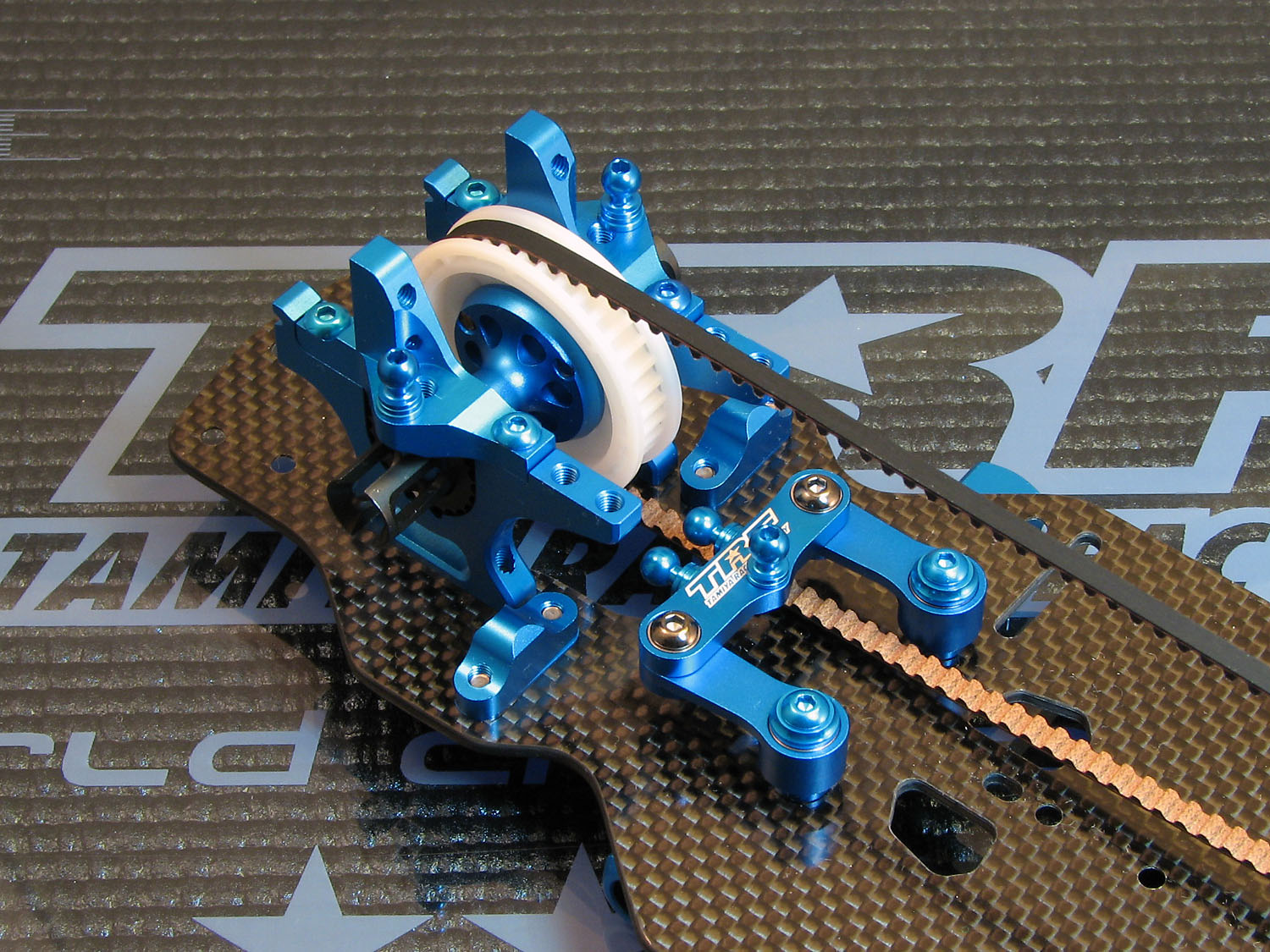
The next step is adding the belt stabilizer mount to the upper deck and then the upper deck to the chassis. The upper deck is mounted with 4 screws front and 4 screws back as well as one screw to the center post.
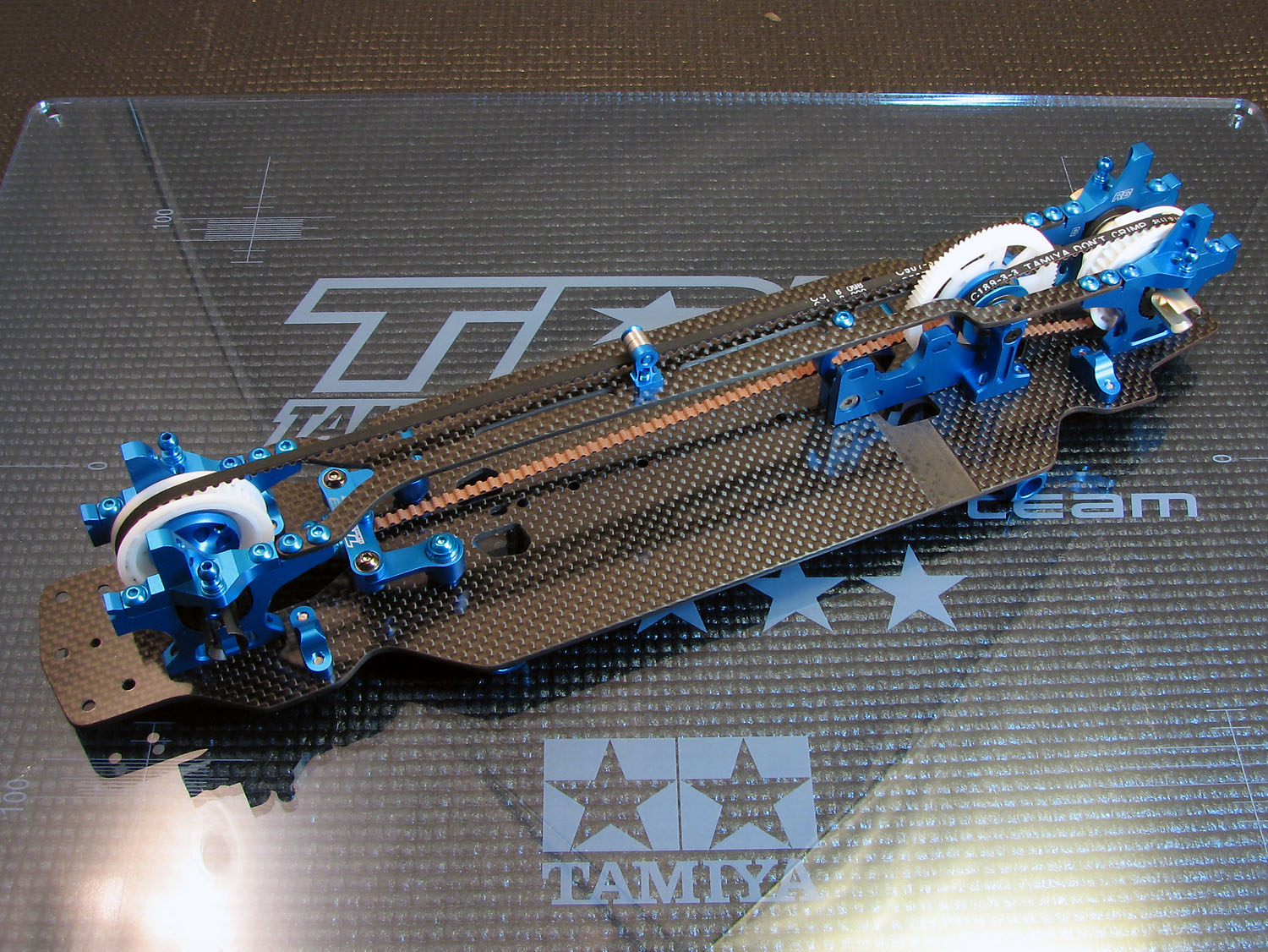
There's also the option to add screws to the motor bulkhead. If you do this (which I don't think we will see much) you need also two 0.5mm spacers between the motor bulks and the upper deck as there is space between them so the upper deck can flex free of the motor bulks.
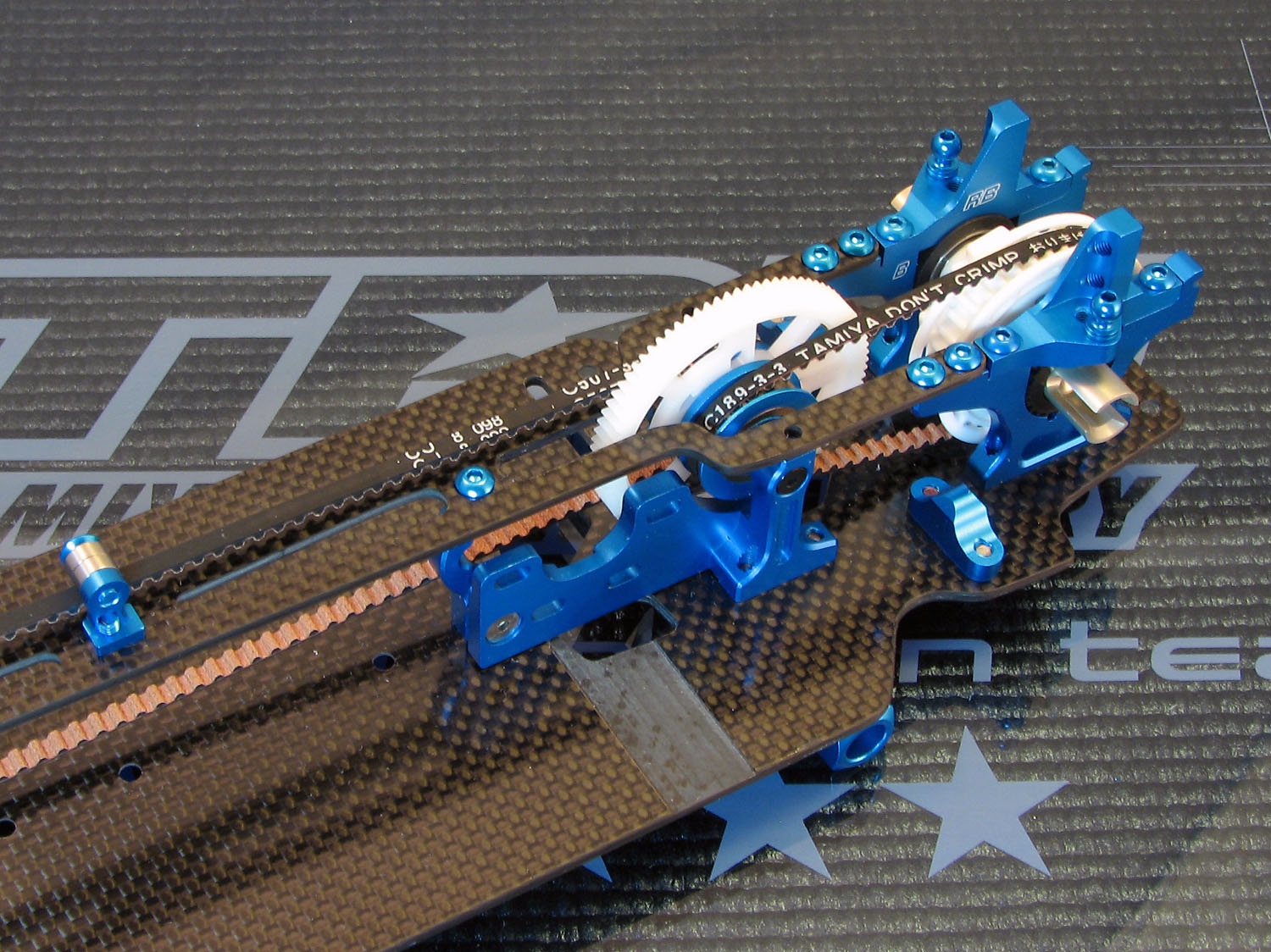
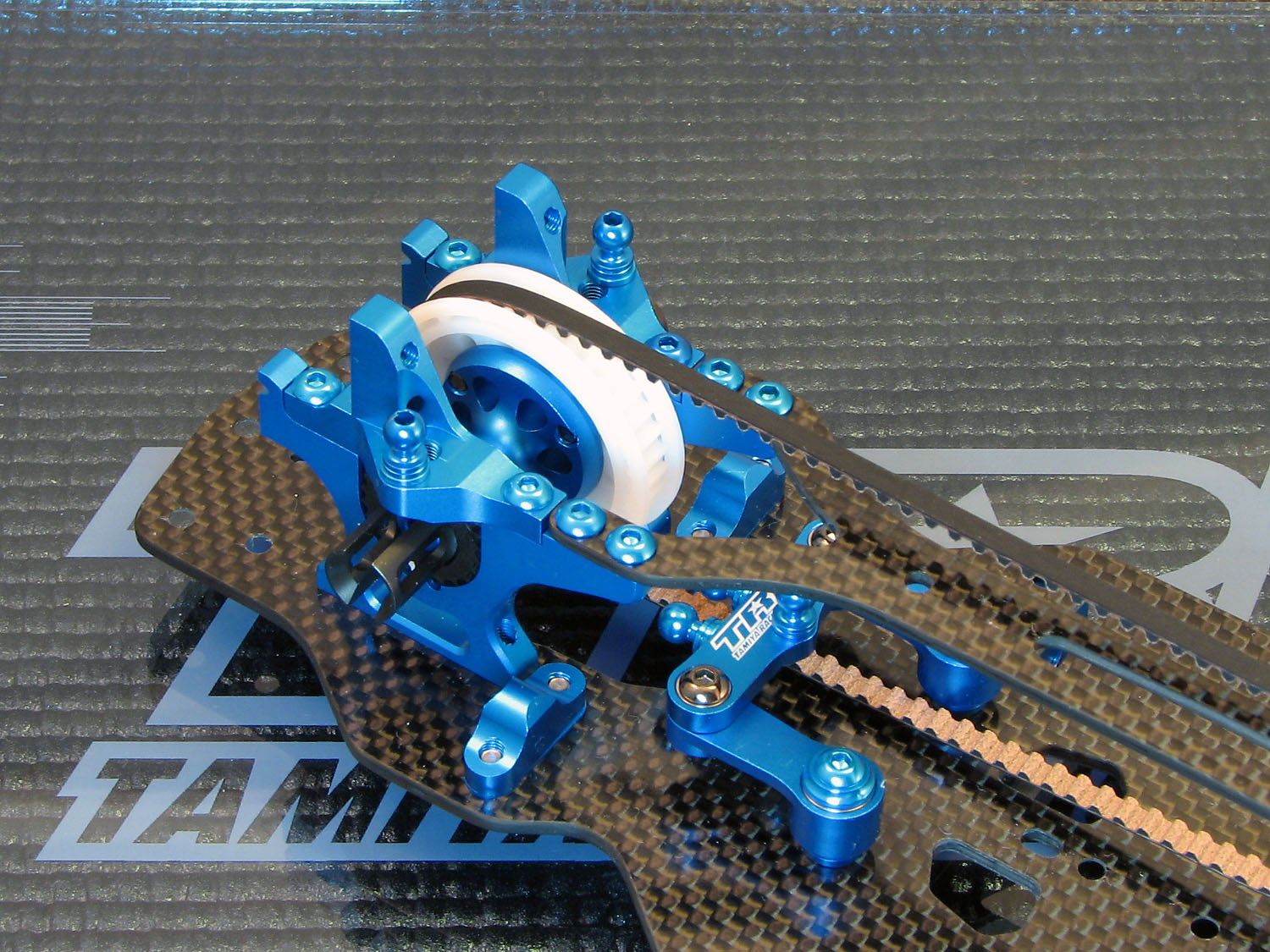
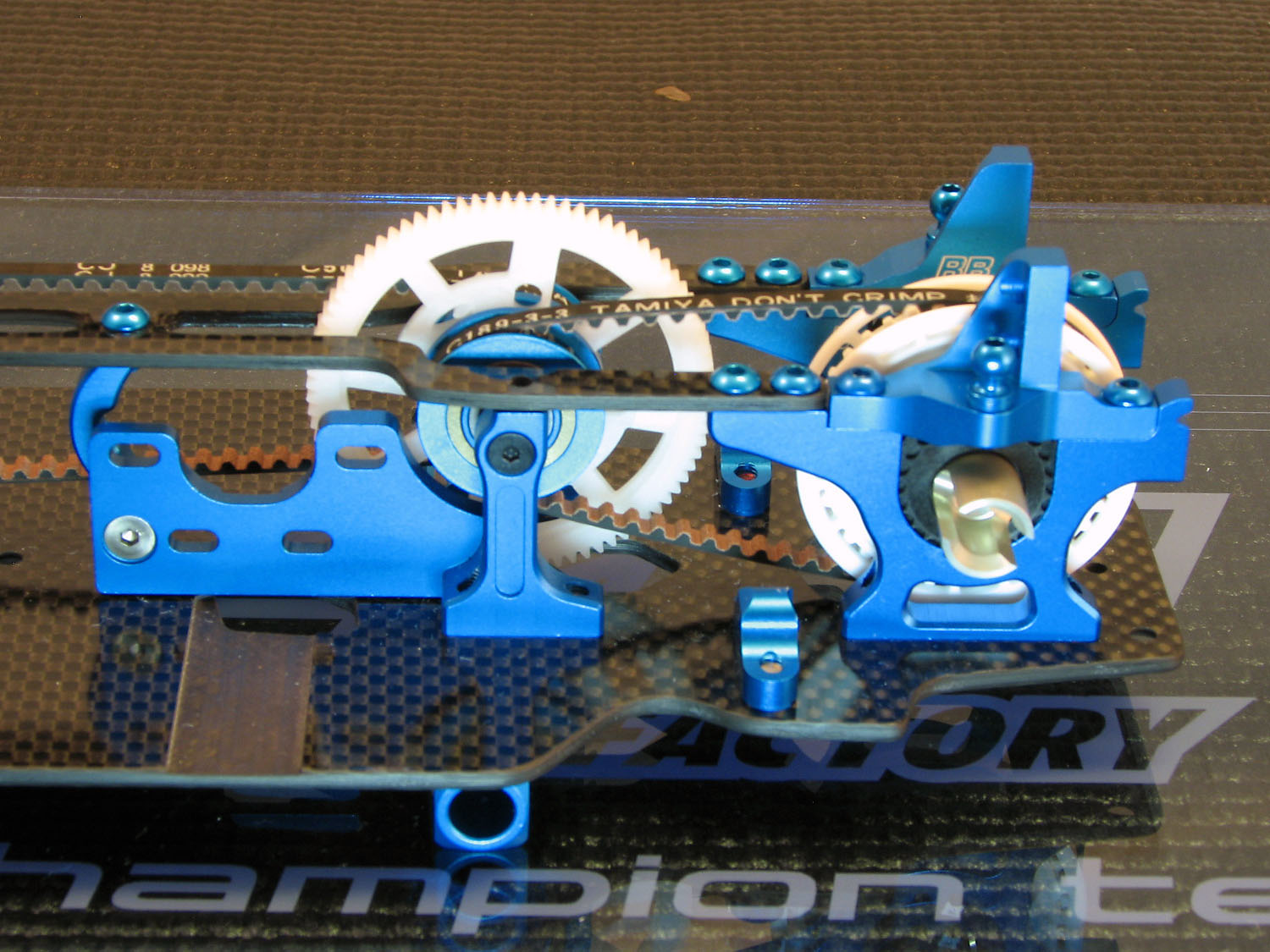
BAG C
Now onto the suspension which on the TRF418 is almost completely new. As I already mentioned in a prvious post on these parts, the length (pin to pin) and the damper mounting positions are the same as on the older short reversible arms used on previous cars. However, the shape is all new and I must say they look much better. The finish of these new moulds are also very good with perfect fit. About the material used it's hard to say just by feel but the arms feel quite stiff so it's a hard material used. But perhaps the most significant difference in real terms is that the new arms are clearly lighter. You feel this as soon as you pick one up. I did not have exact enough tools to check the precise weight of the parts, but the arms both front and rear appear to be 2.5-3g lighter per arm, which is a significant difference.
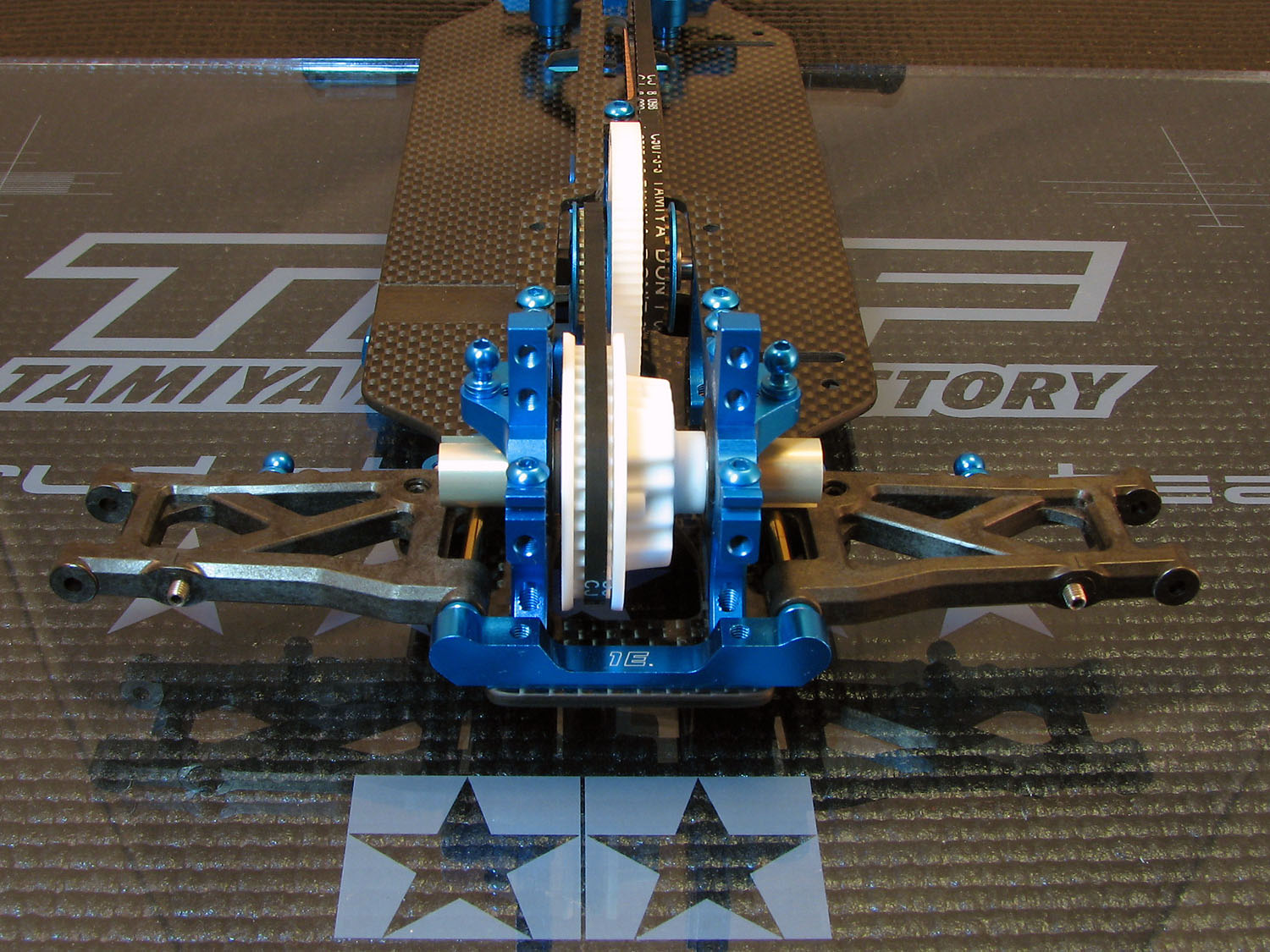
For the dampers and roll bars I use different connectors to what's included in the kit. The normal blue ball connectors are included.
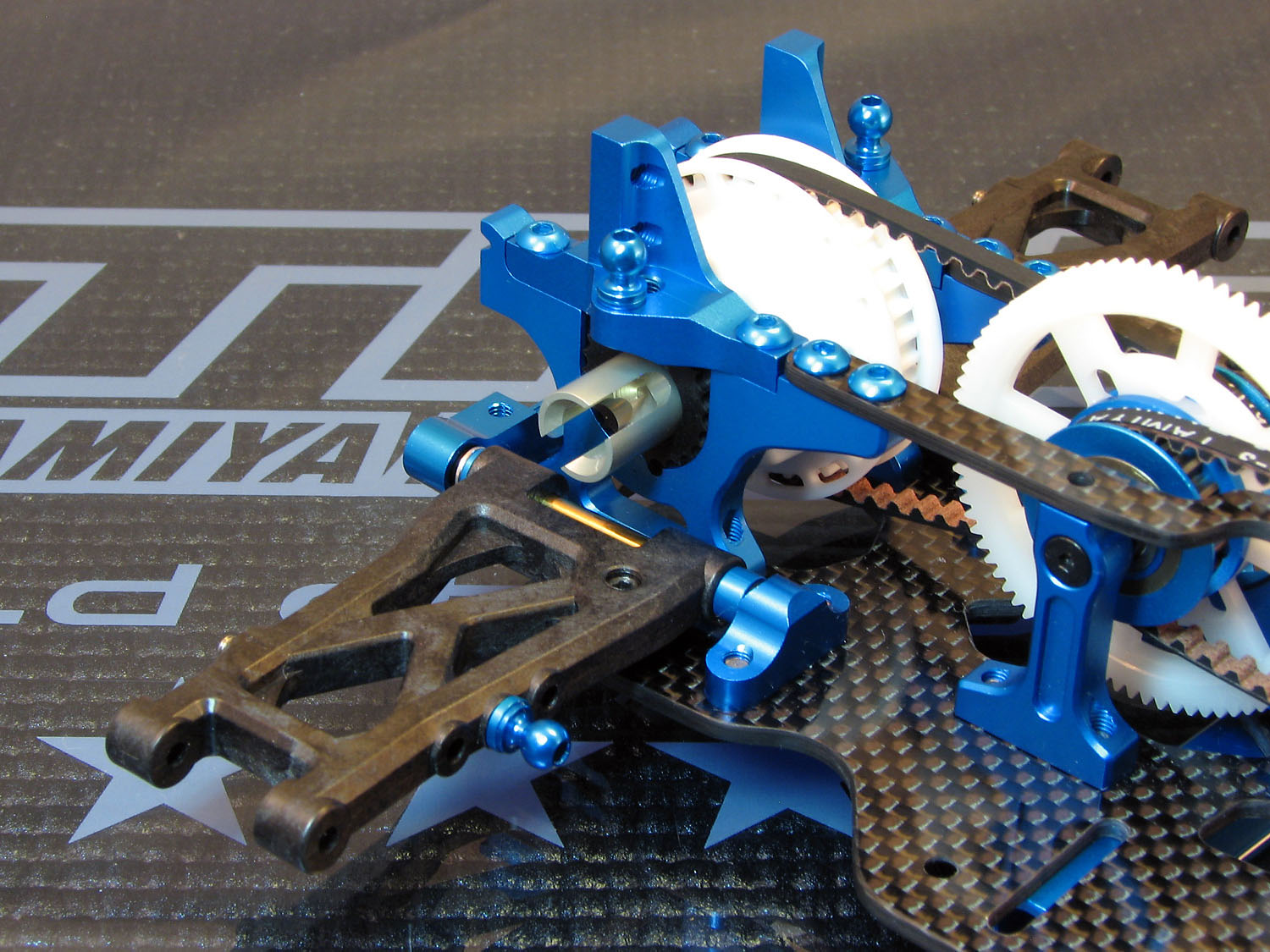
The front arms now have the roll bar mounting point moulded at the back side of the arms, which differs a lot in its shape compared to the old arms.
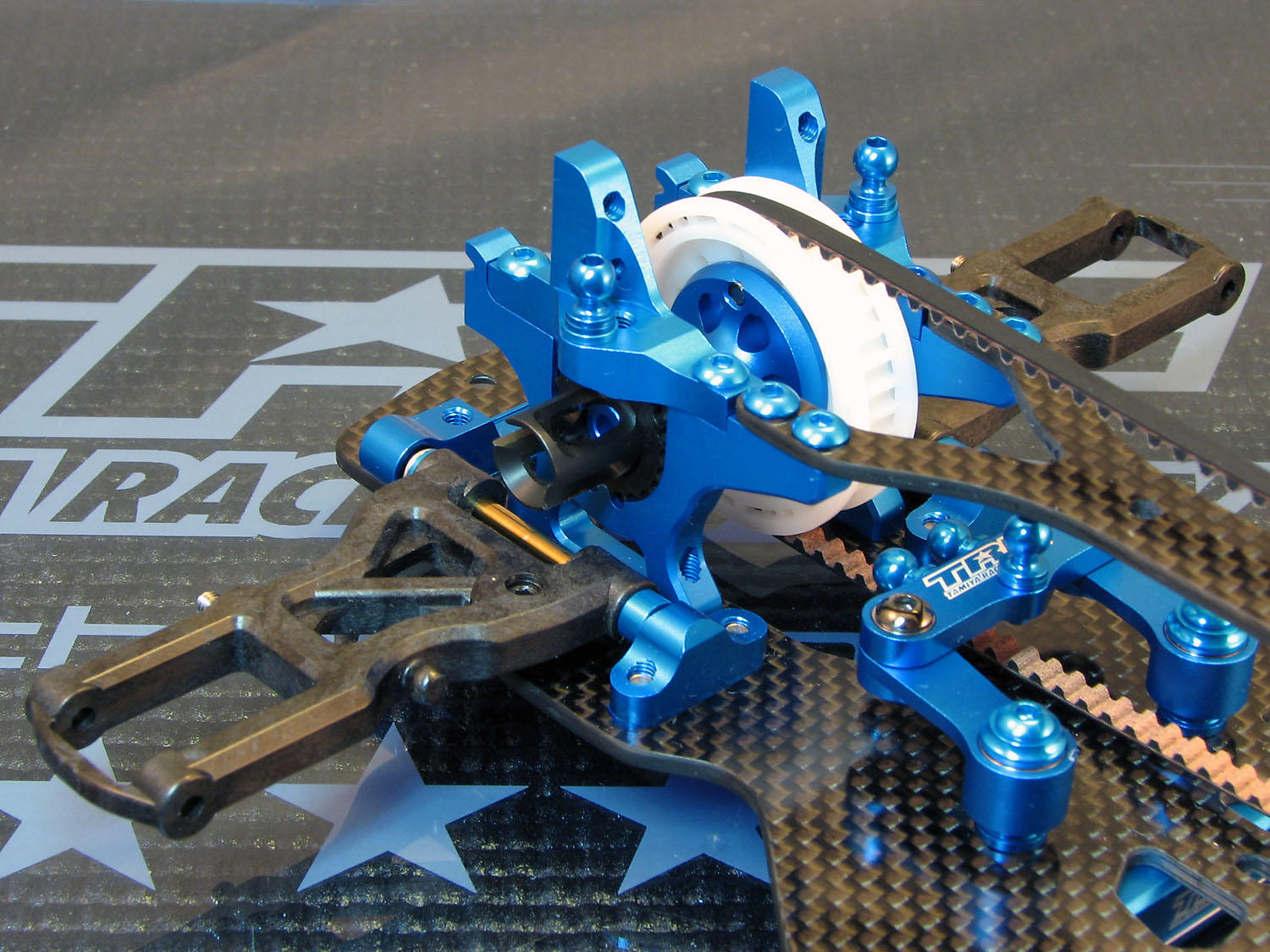
The roll bars added to the car. As you can see both the bars and the mounting to the arm is completely new - a welcome improvement! Now much more easy to do right and adjust. The special ball connectors used here seem to be just slightly too large as when you connect the adjusters (ball cups in normal lingo) the first time they are a bit tight. Very unusual for a TRF kit but once I removed them and connected them again it got better. The bars included are medim front and medium-soft rear. In the bonus parts included with this kit (and all export kits of the first batch) you also get soft bars fron and rear.
The rear uprights are, as I mentioned in the previous post about the new suspension parts, basically the same except that they only have one camber link hole somewhere in between the previous two. Other than that all is the same, with the same 5x10mm TRF bearings, 44mm alu driveshafts etc.
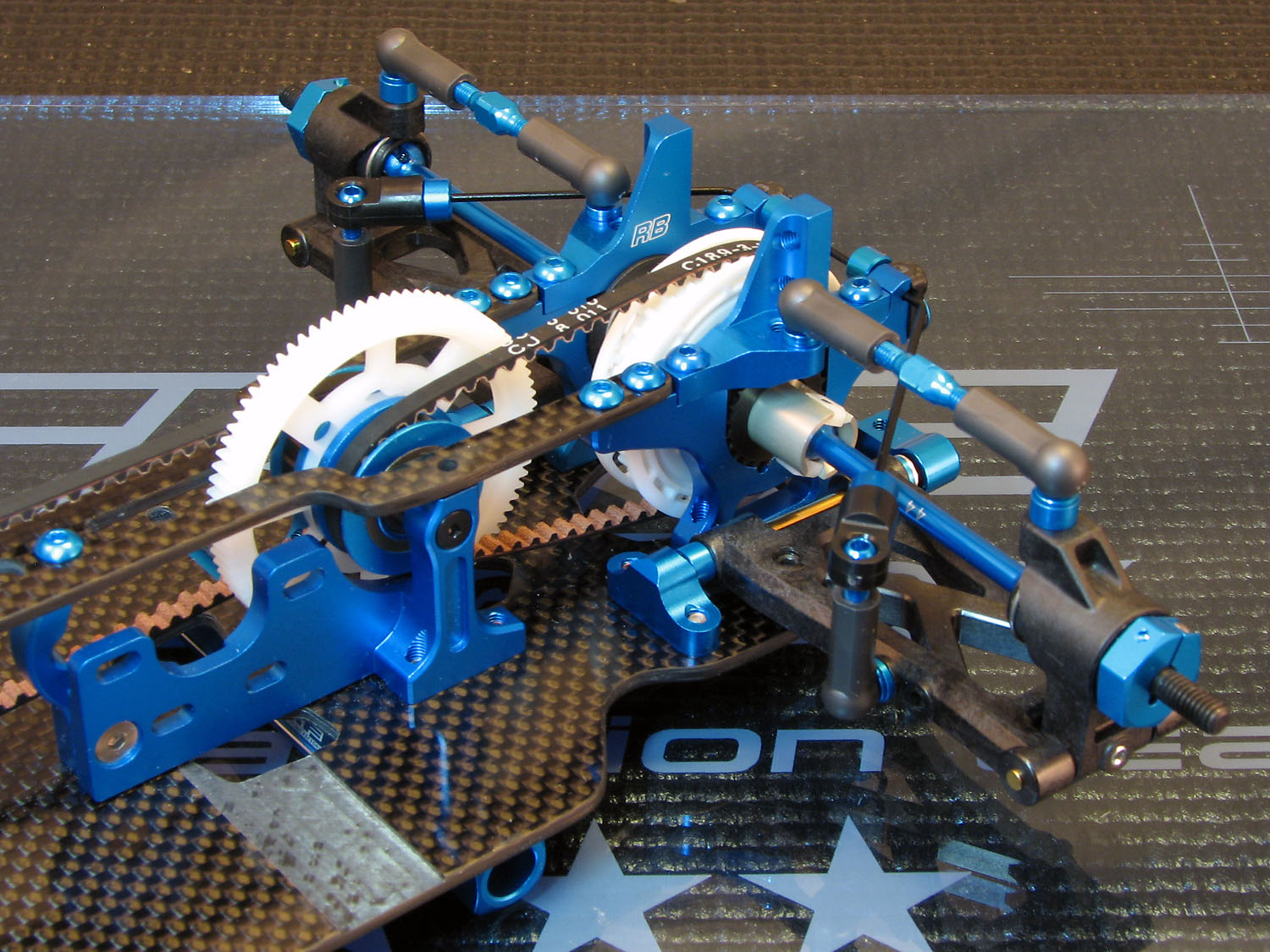
At the front it's a similar story with the new uprights similar but with the steering link hole in a new position further inwards. Other than that, here too all else is the same with the same c-hubs, and the excellent double-joint driveshafts.
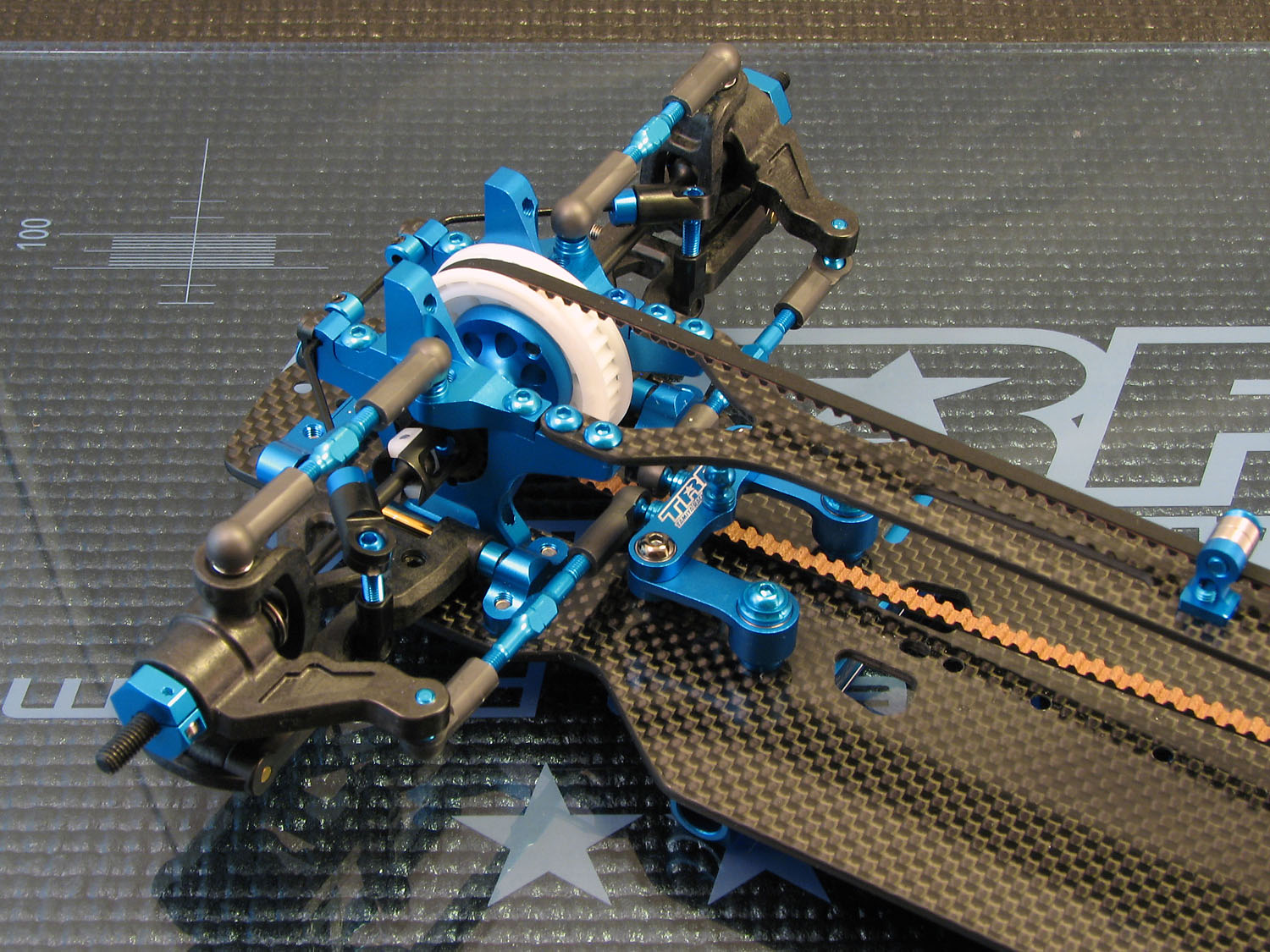
This is what the TRF418 looks like at the end of bag C.
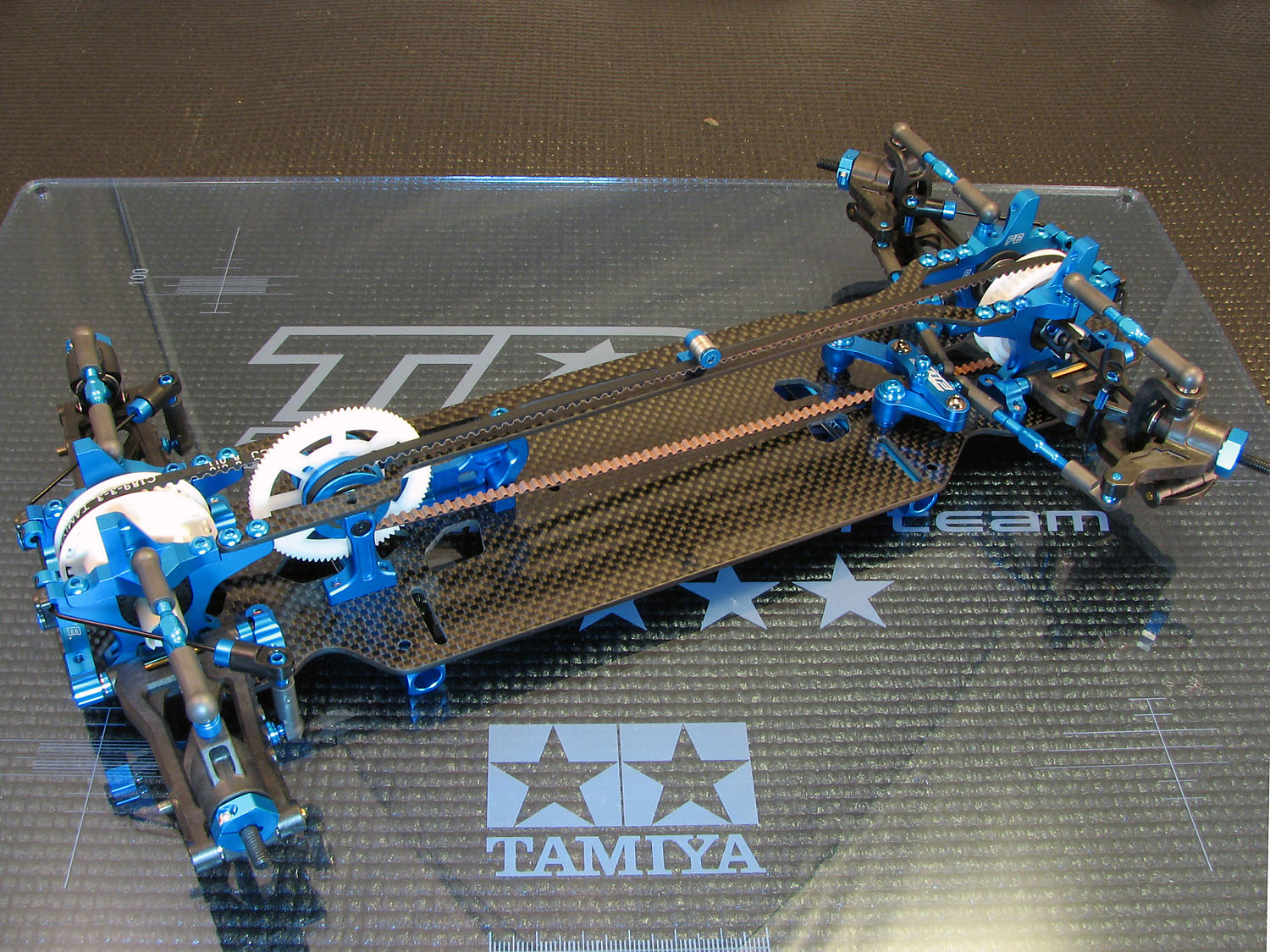
BAG D
The damper stays are obviously new but follow a similar design to what we had on the TRF417 V5. The holes for the body mounts at the rear are now countersunk though. Here you can see that I use the 42231 Ball Nuts for TRF Dampers (4pcs.) to mount the dampers.
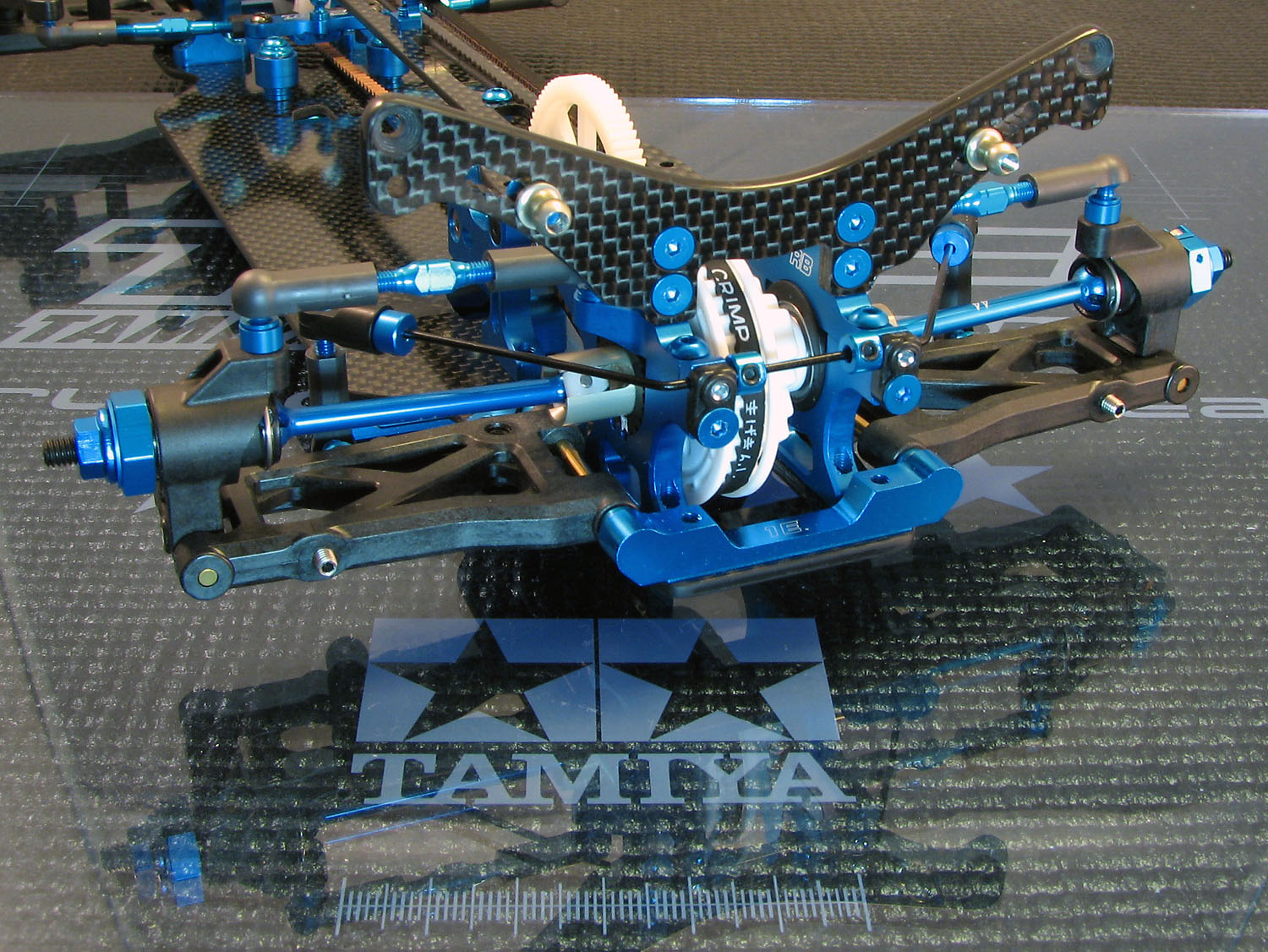
This photo is mostly to show off that I achieved quite a nice finish on the edge of the damper stays, at least the front one!
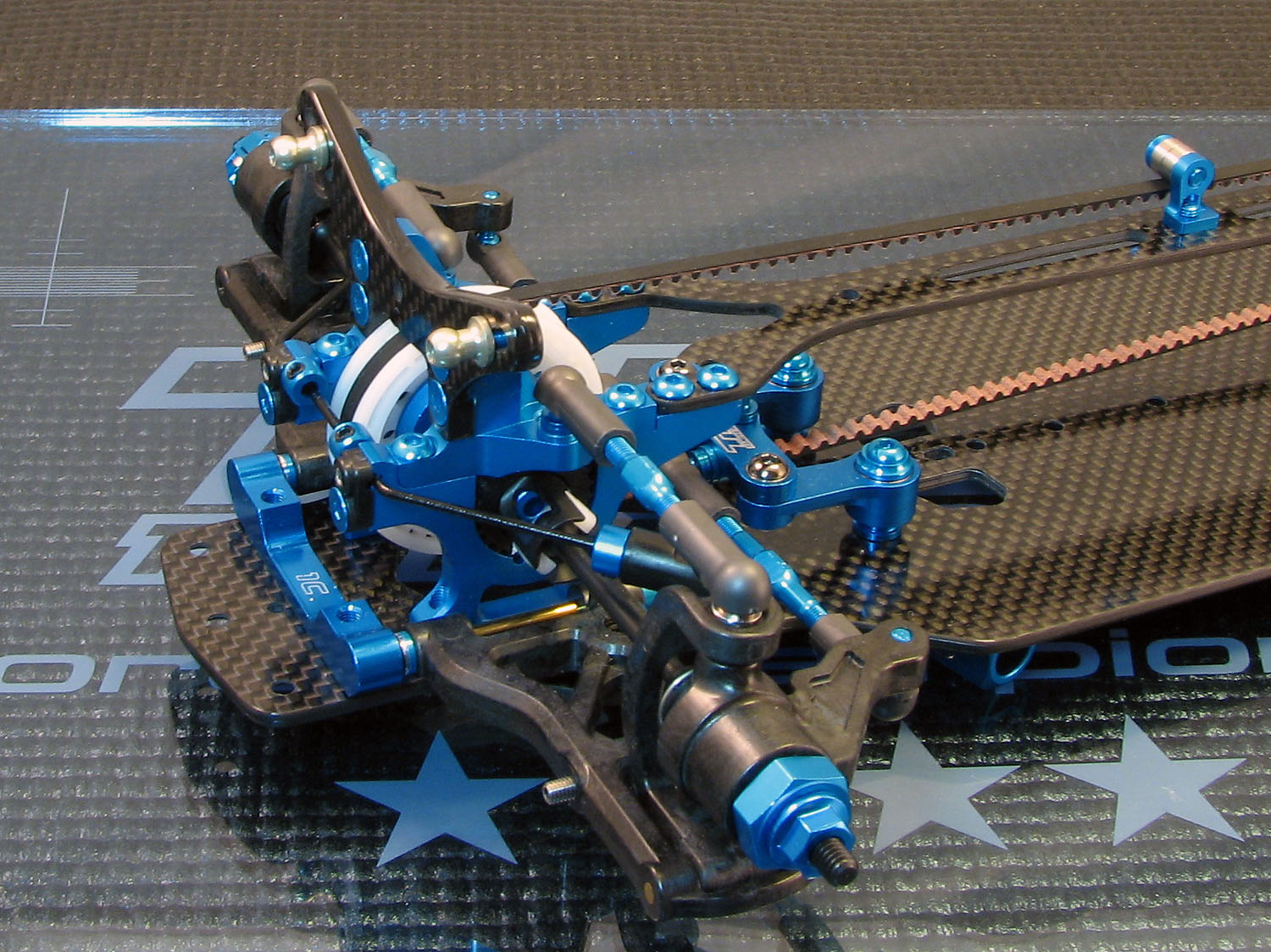
The dampers are the normal TRF dampers with HL cylinders as have been used on most cars in the last few years. Still as good. Tamiya did manage to add a couple of new parts to them though, with the TRF418 possibly one of the first cars to include alluminium lower spring holders - a very nice touch! The ones included are the 42192 TRF Damper Large Diameter Retainer (4pcs.) to match the new larger diameter springs. Also new are the upper spring retainers which are a lower profile design. In addition the springs are completely new parts, with medium (black/black) springs included front and rear. In the bonus parts you get one pair of additional soft (black/red) springs and one pair of hard (black/yellow) springs. Looking at the springs they remind me a lot of the Ride Pro Matched springs. Obviously they are springs best for use on asphalt. For carpet running normally you would run Yokomo springs, which also fit the included large diameter spring holders.
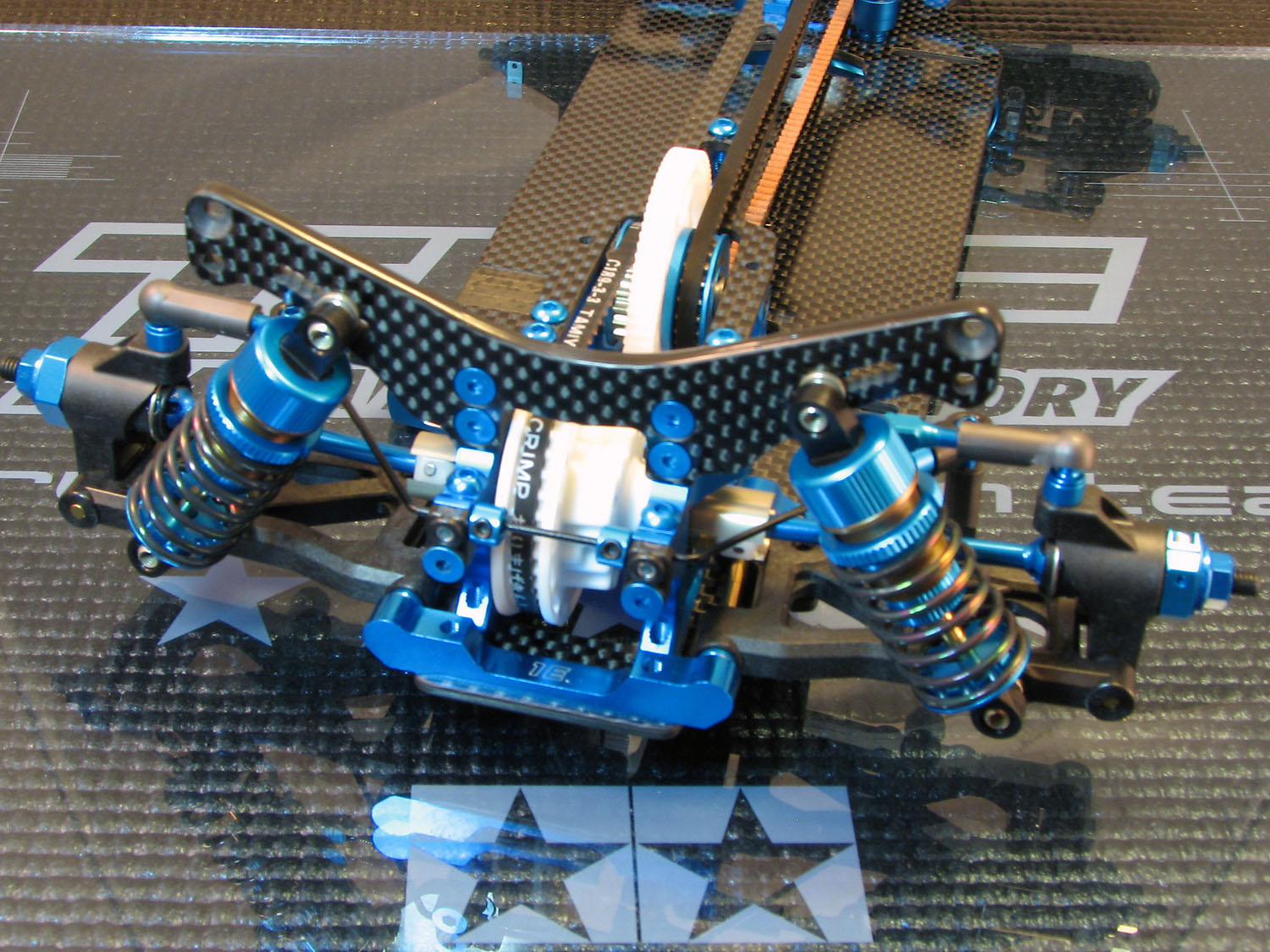
BAG E
On to bag E and time to finish the chassis. As I already mentioned I am no fan of the look of the included ribbed servo mount so I use the one from the TRF417 V5 which is much more to my liking although it is a couple of grams heavier.
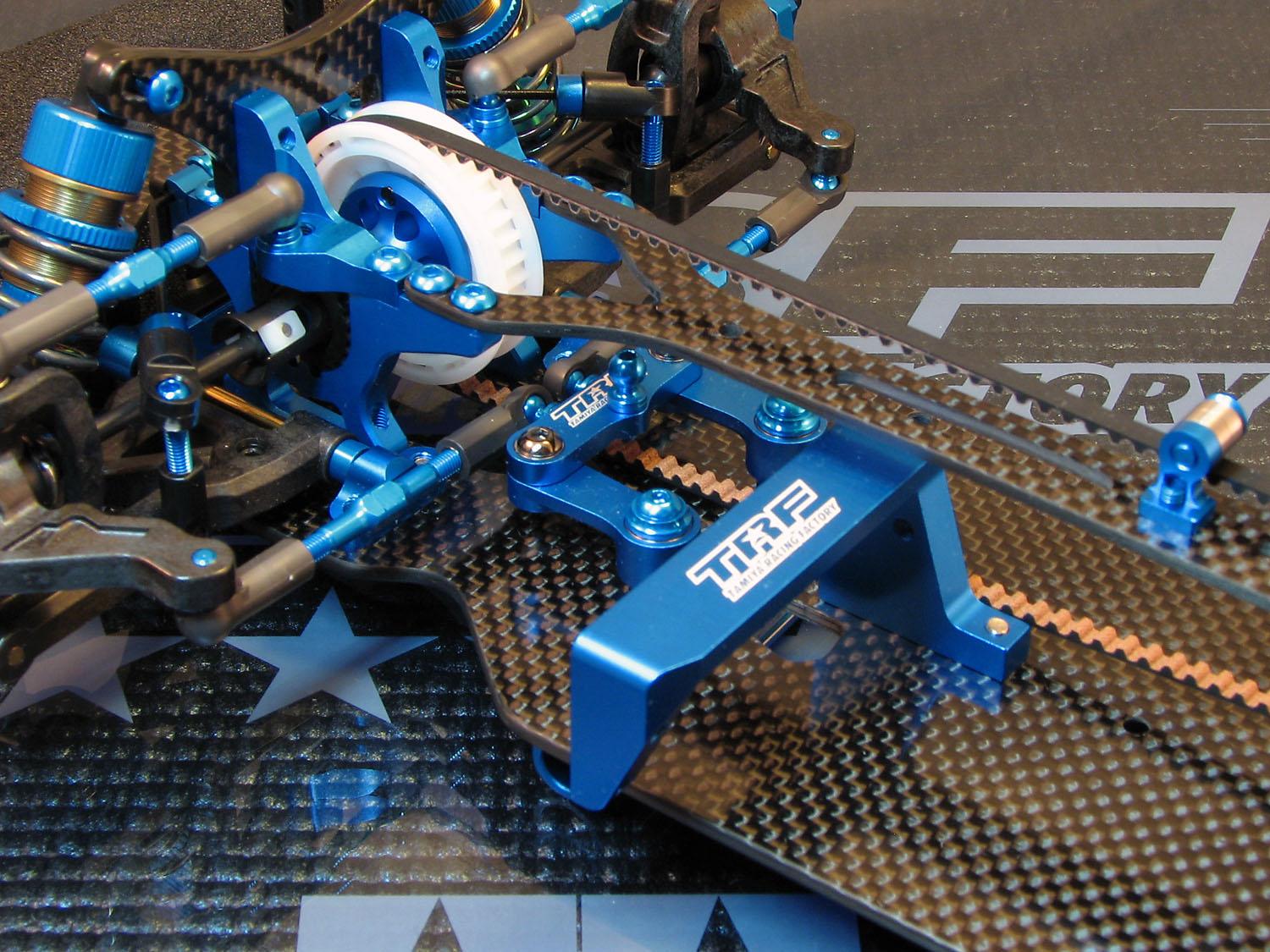
The lower bumper, foam bumper and body mounts are all the same as on previous cars but the bumper support is a new part, again with countersunk holes. As you can see here I have used the 42245 Aluminum Body Adjuster Mount.
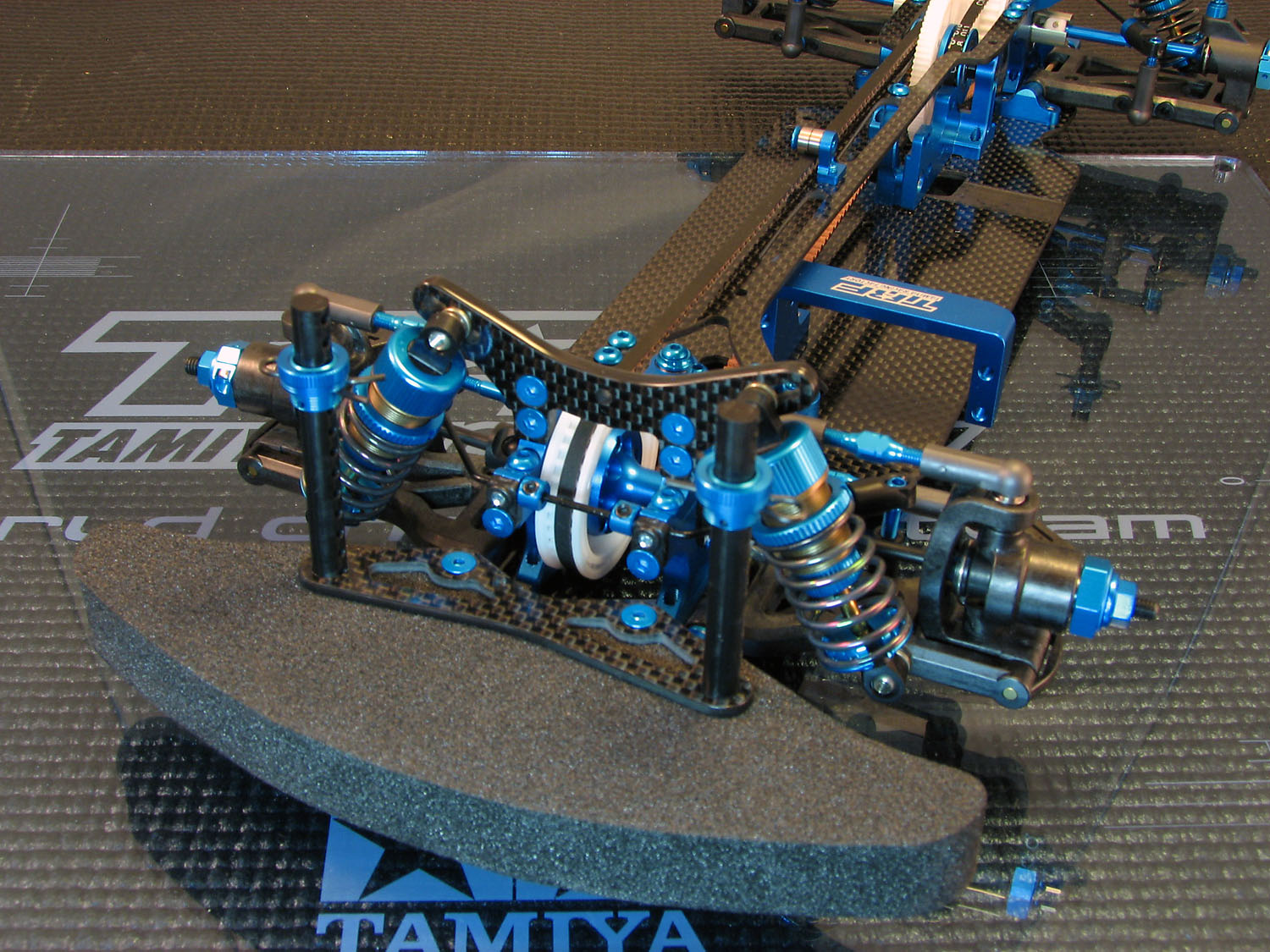
So this is what she looks like all completed. I like the car more now compared to before I got it and built it. Once all assembled it does not feel much too stiff as I was afraid it would when looking at the lower deck separately. It feels about right, and obviously once you run the car it will get more flexy as all cars do. Time will tell.
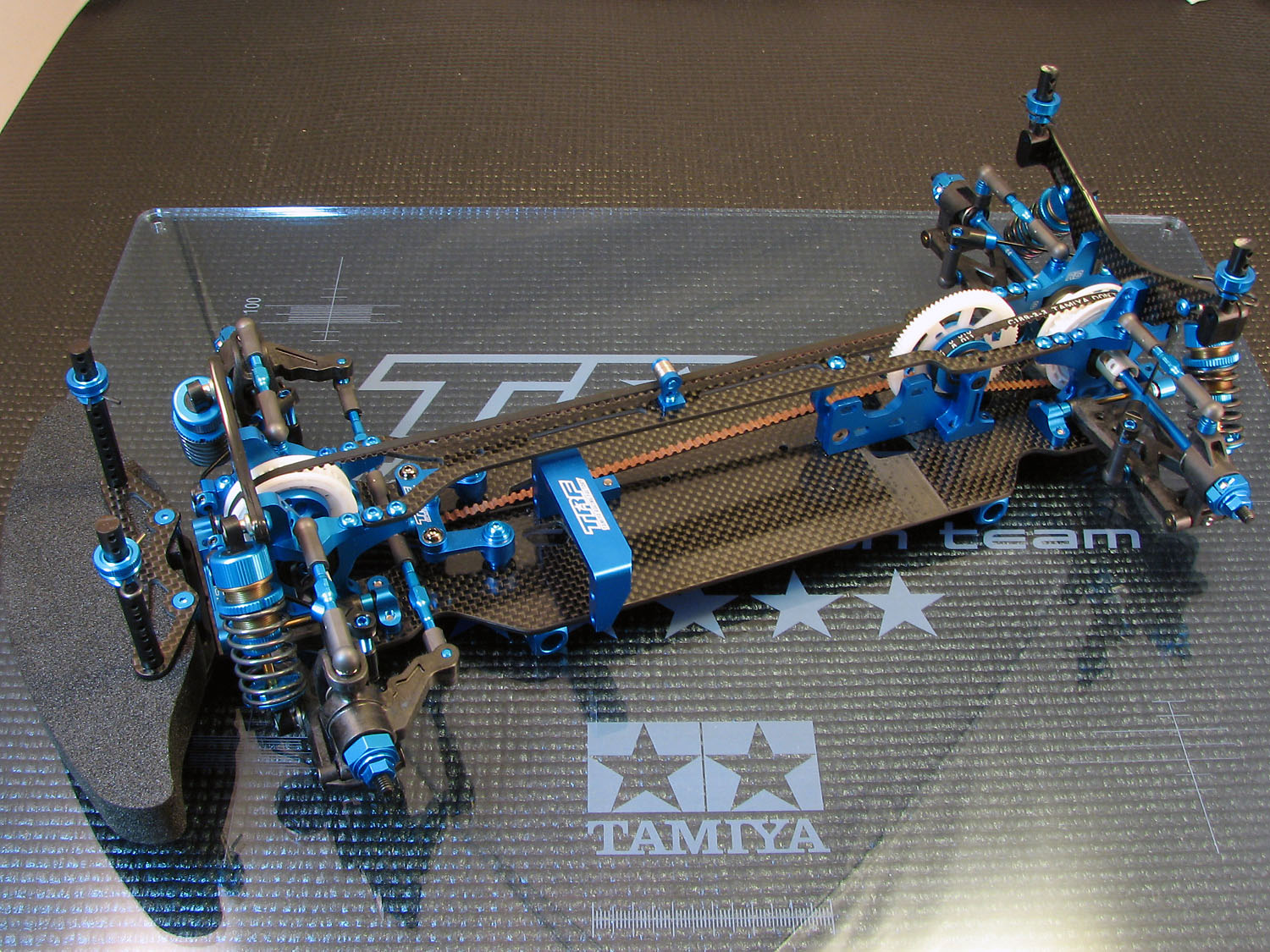
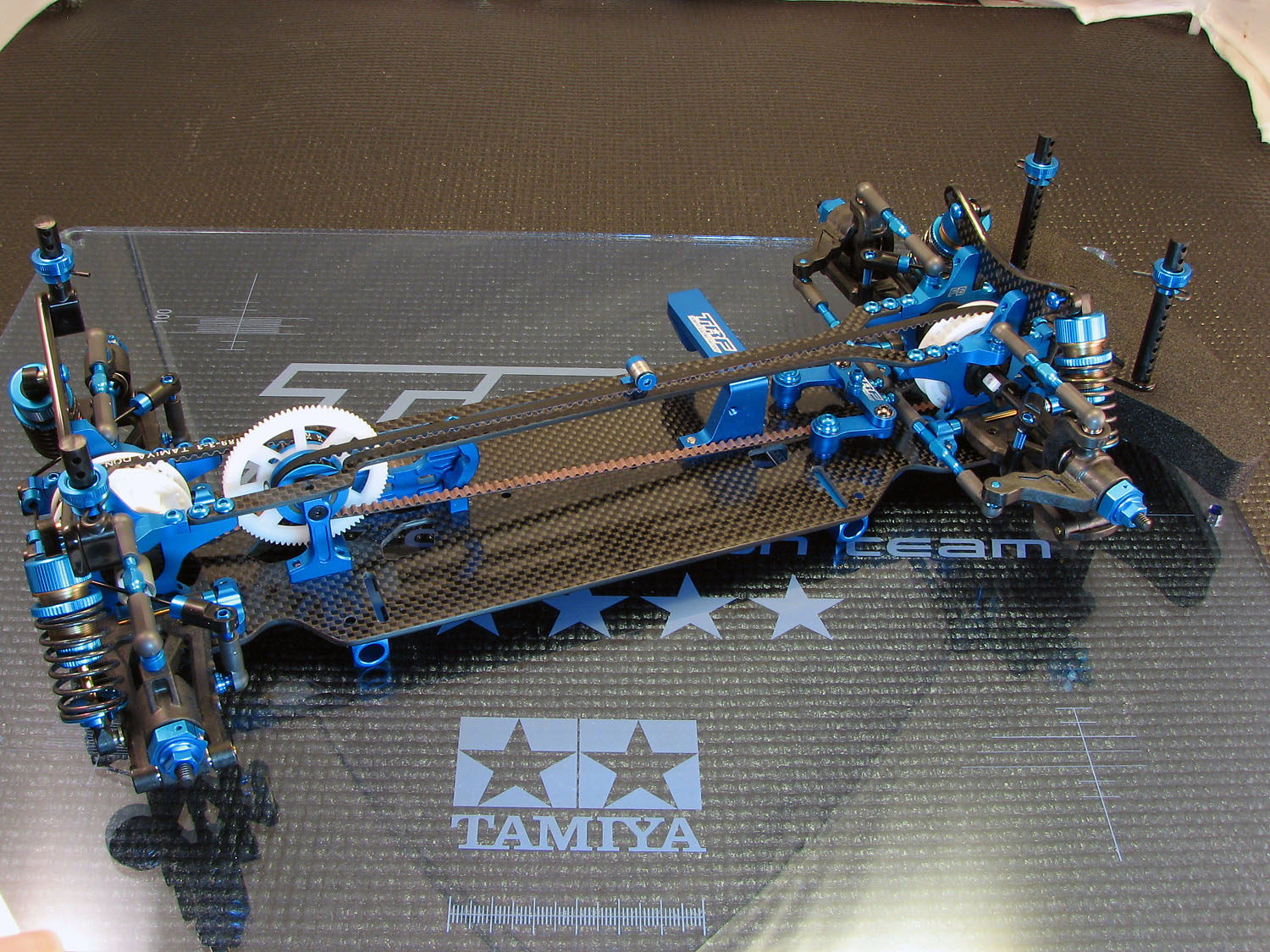
So that's the TRF418 kit done then. Hope you liked the build report.
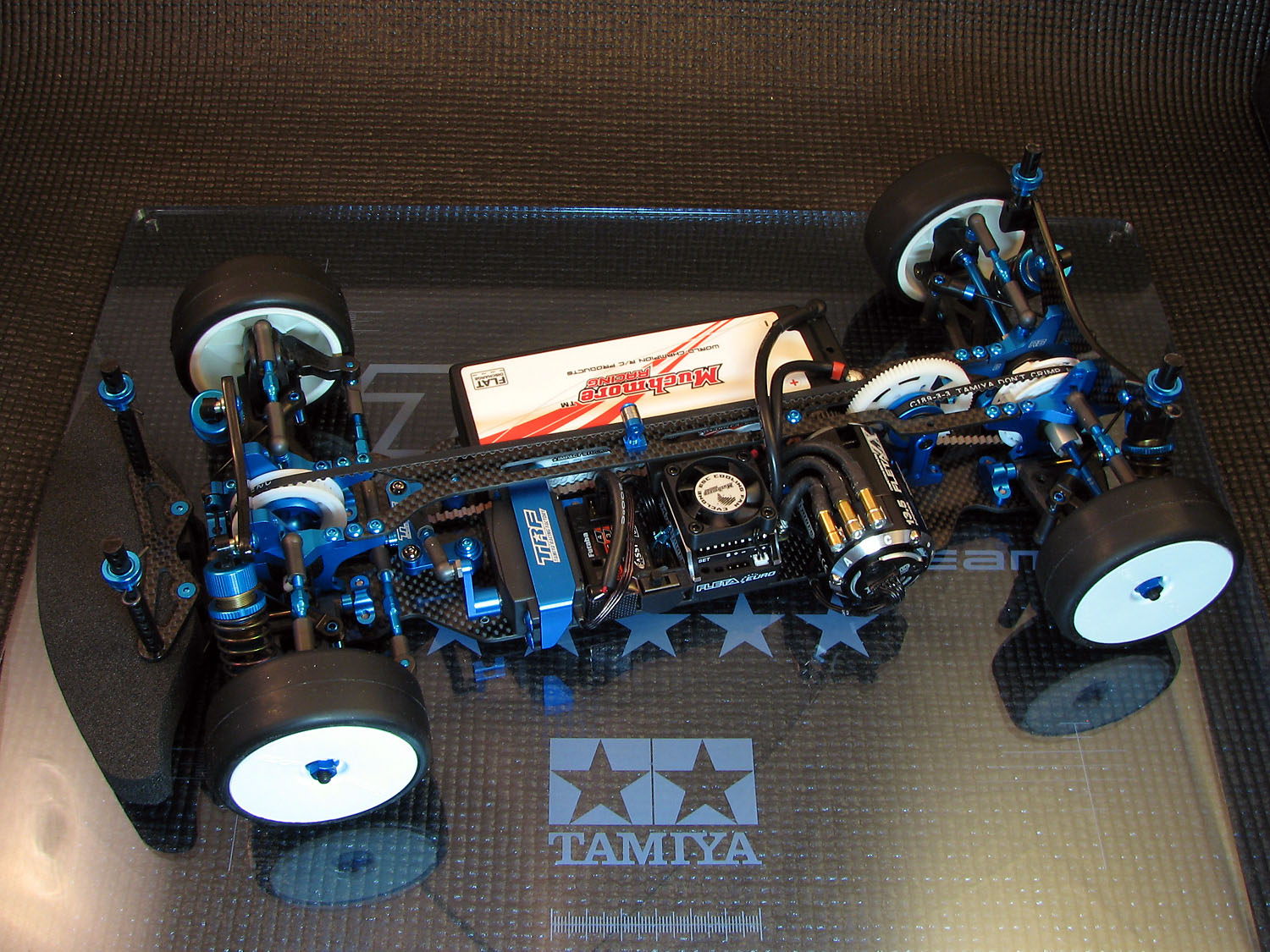
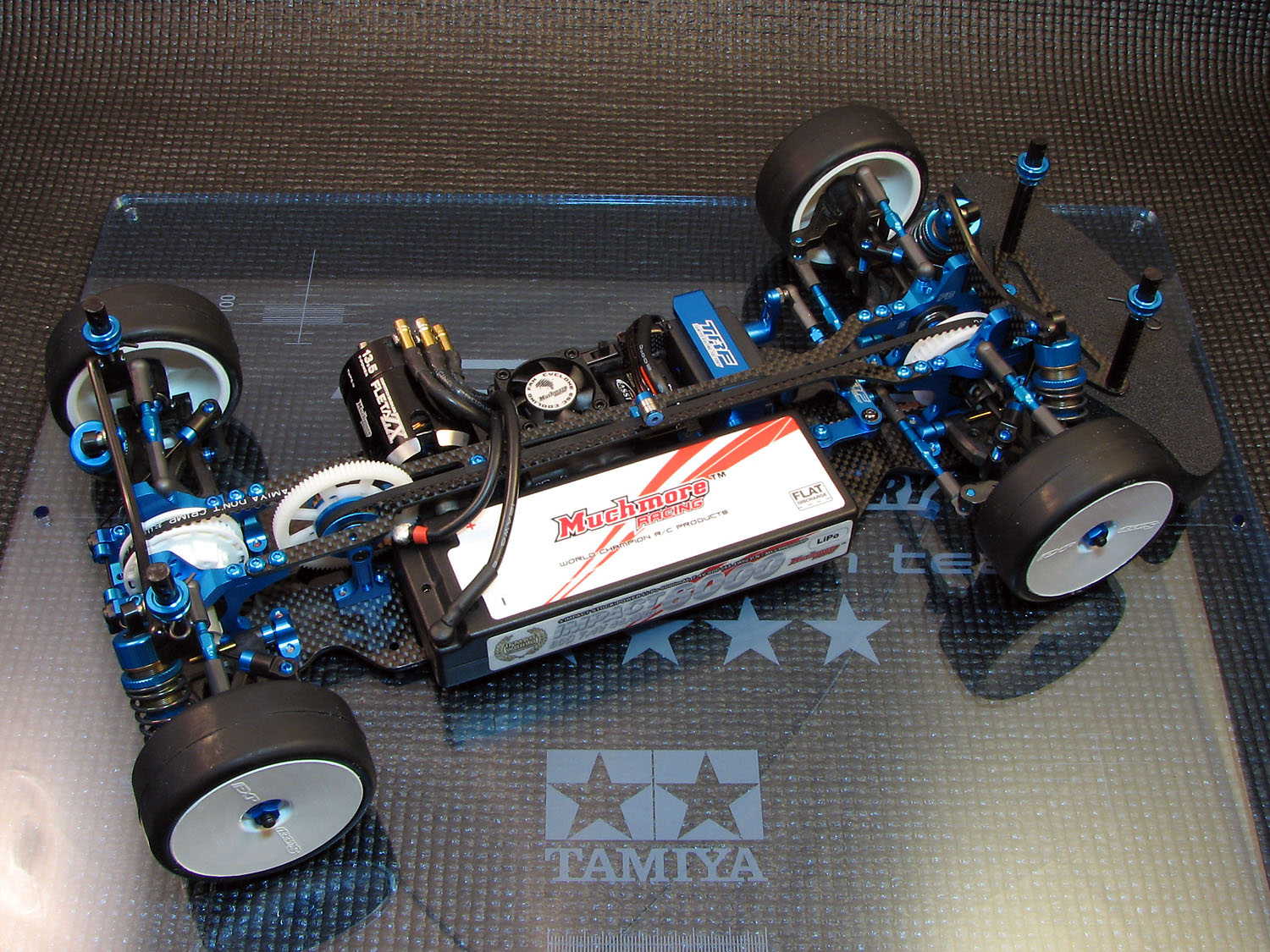
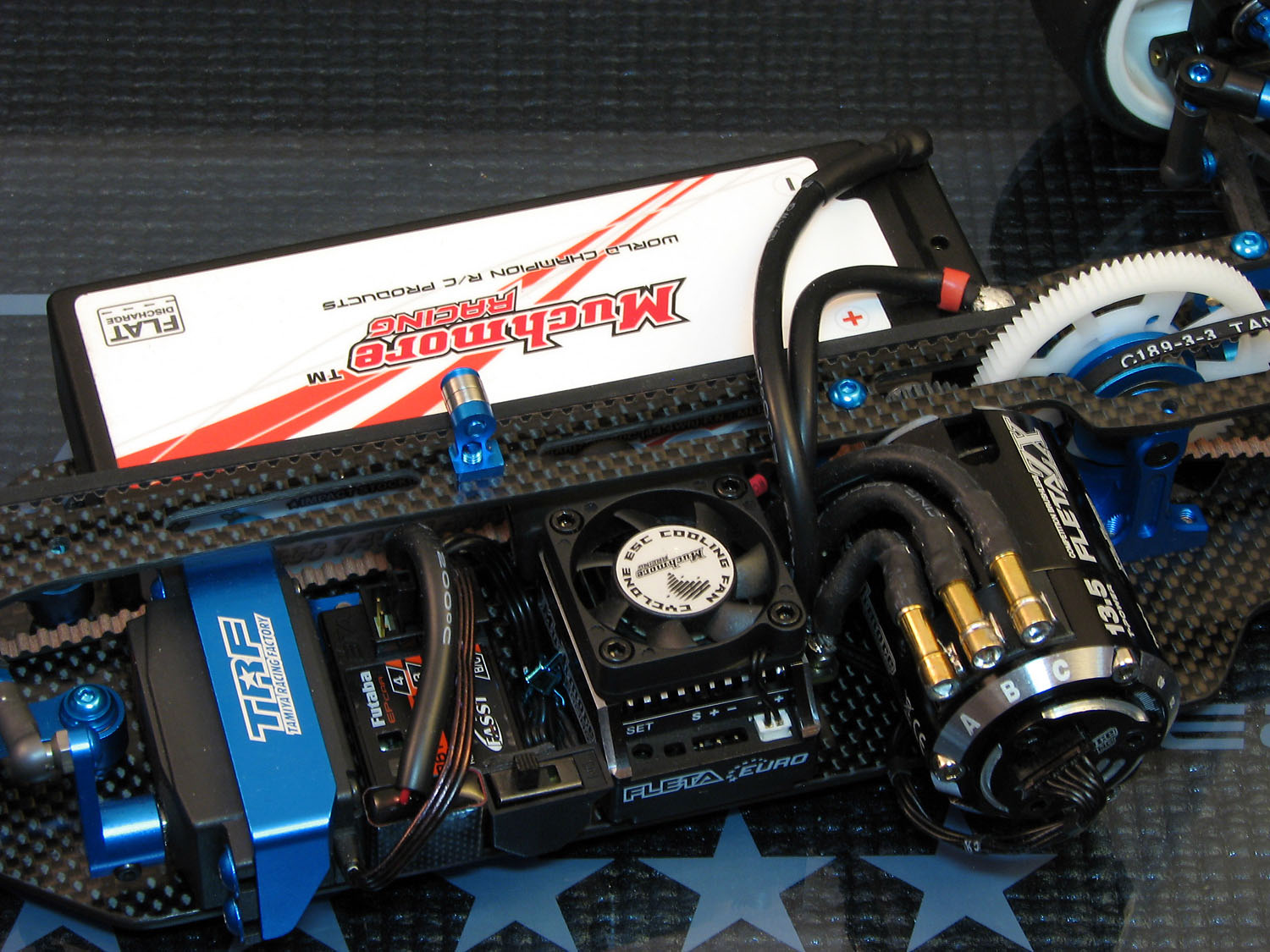
Did you had to use an extra shim with the white panaracer spur gear?
No. I tried the spacer but when using it there's not enough interlocking of the pins imo. And the way the center shaft is done you add normal 4mm shims instead before you add the e-clip at the end of the shaft. This way you can add shims according to any spur you use to take out any play here. With the Panaracer spur I use 2 0.3mm shims and it's perfect.
